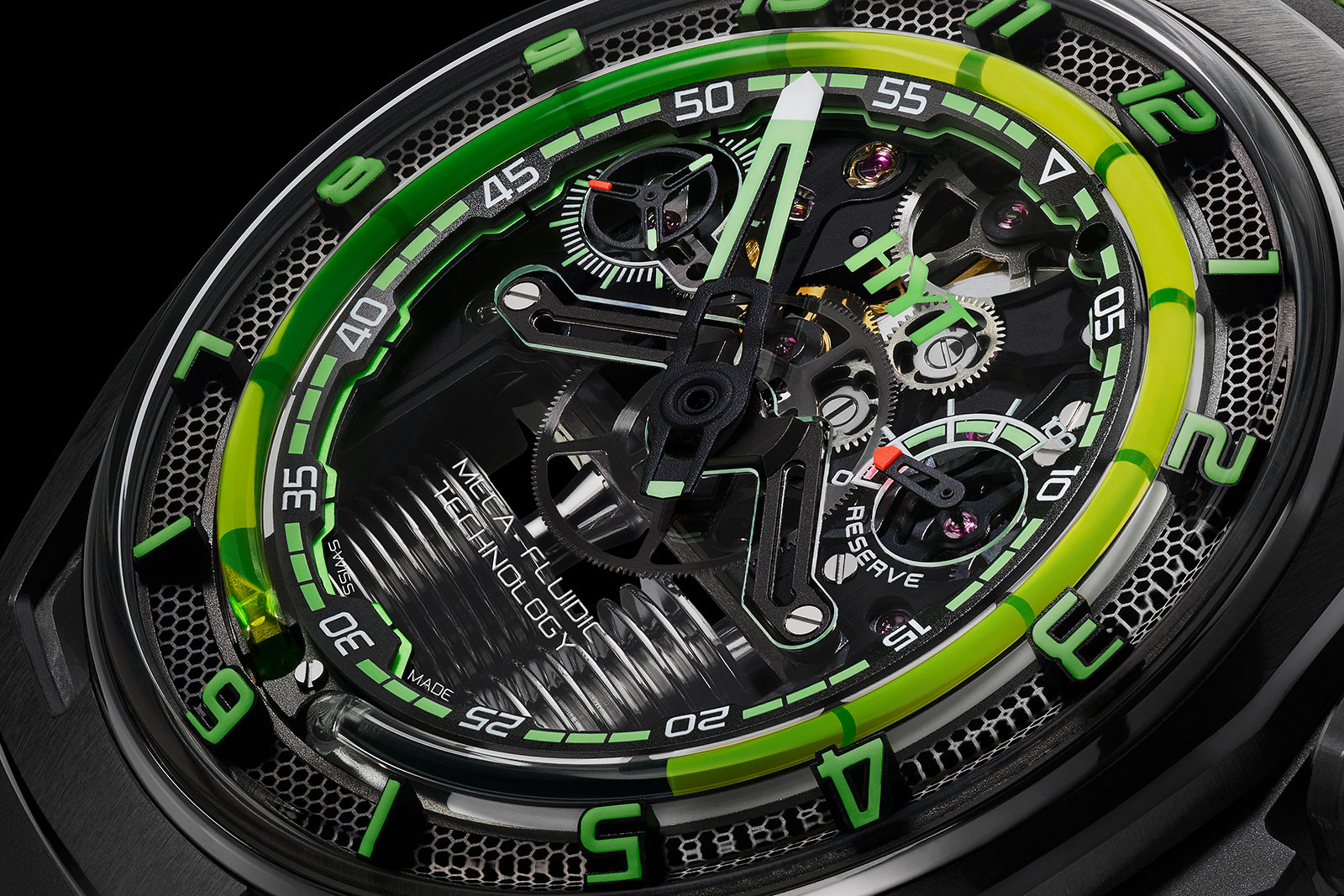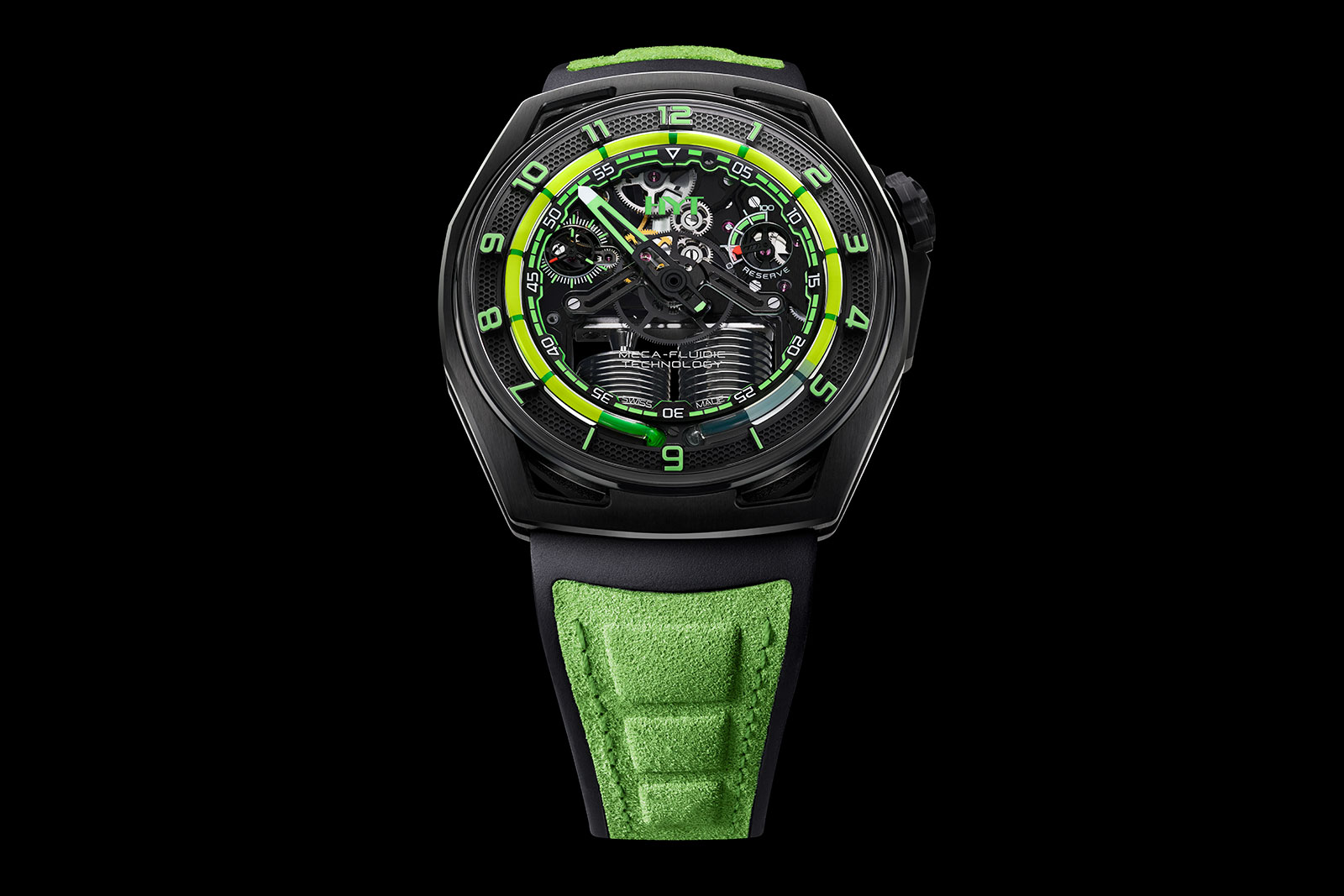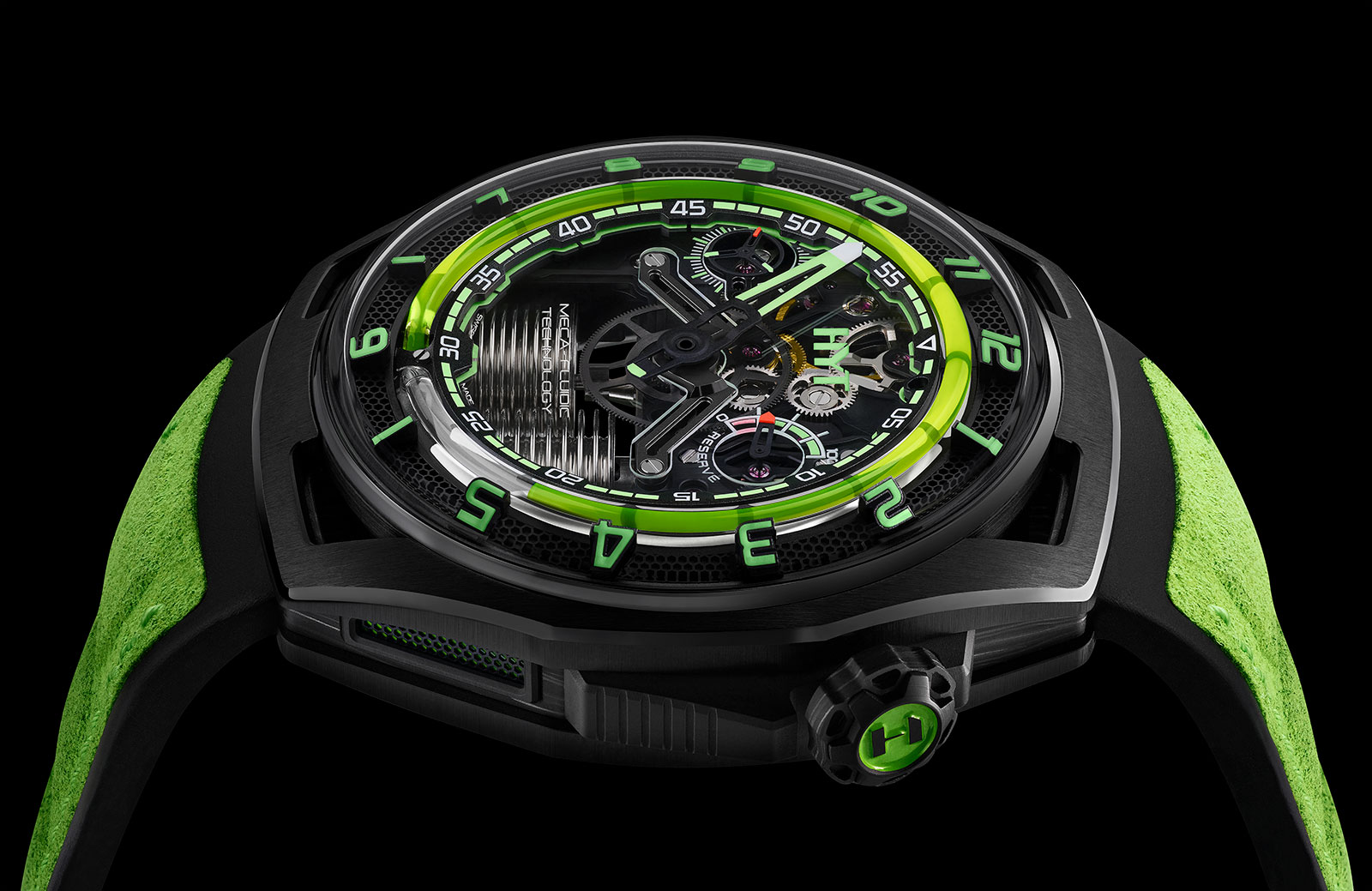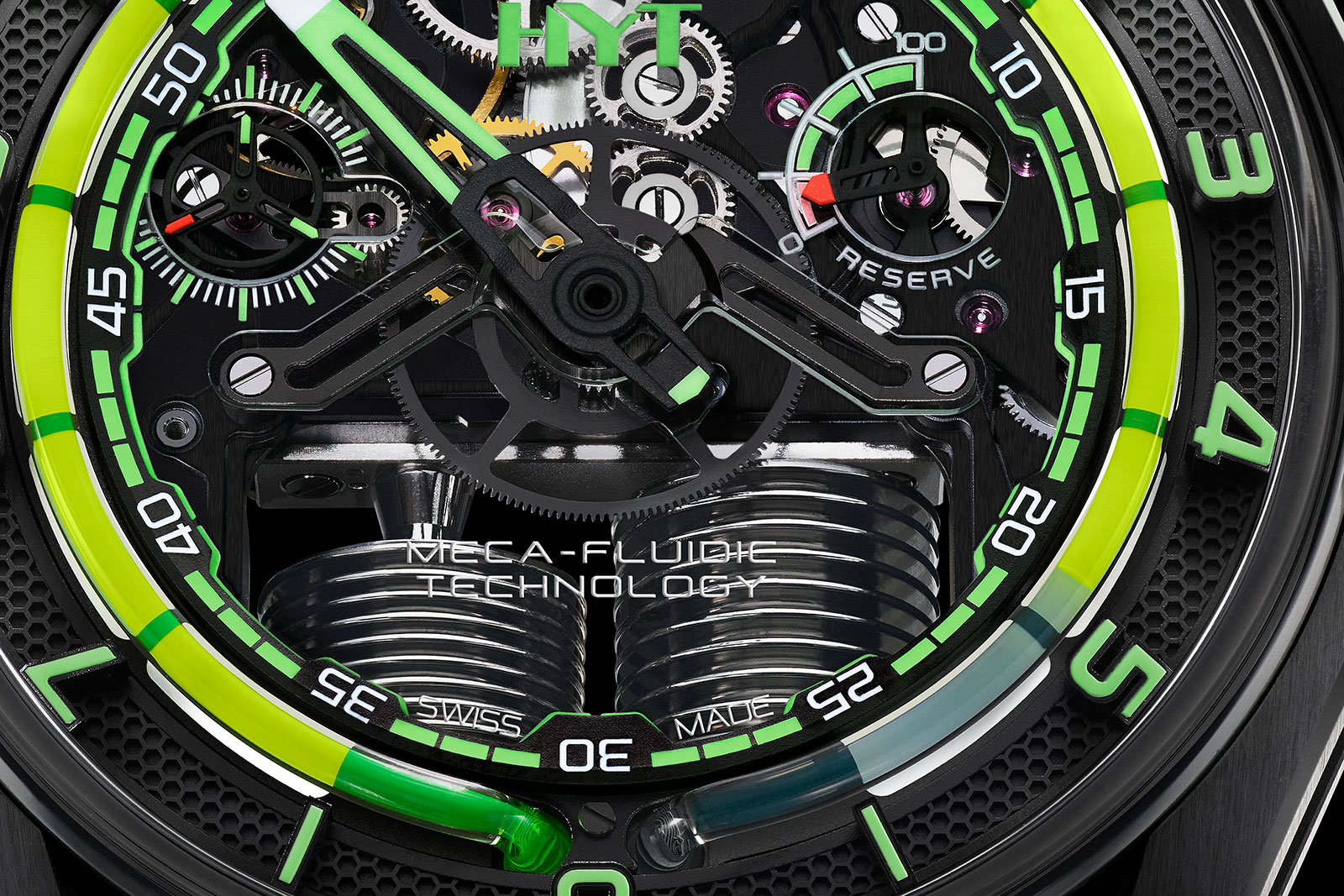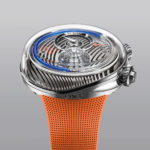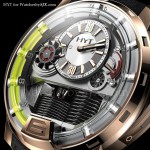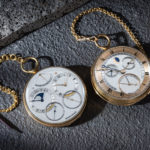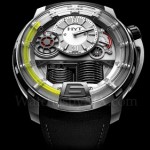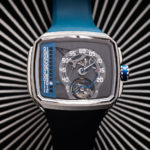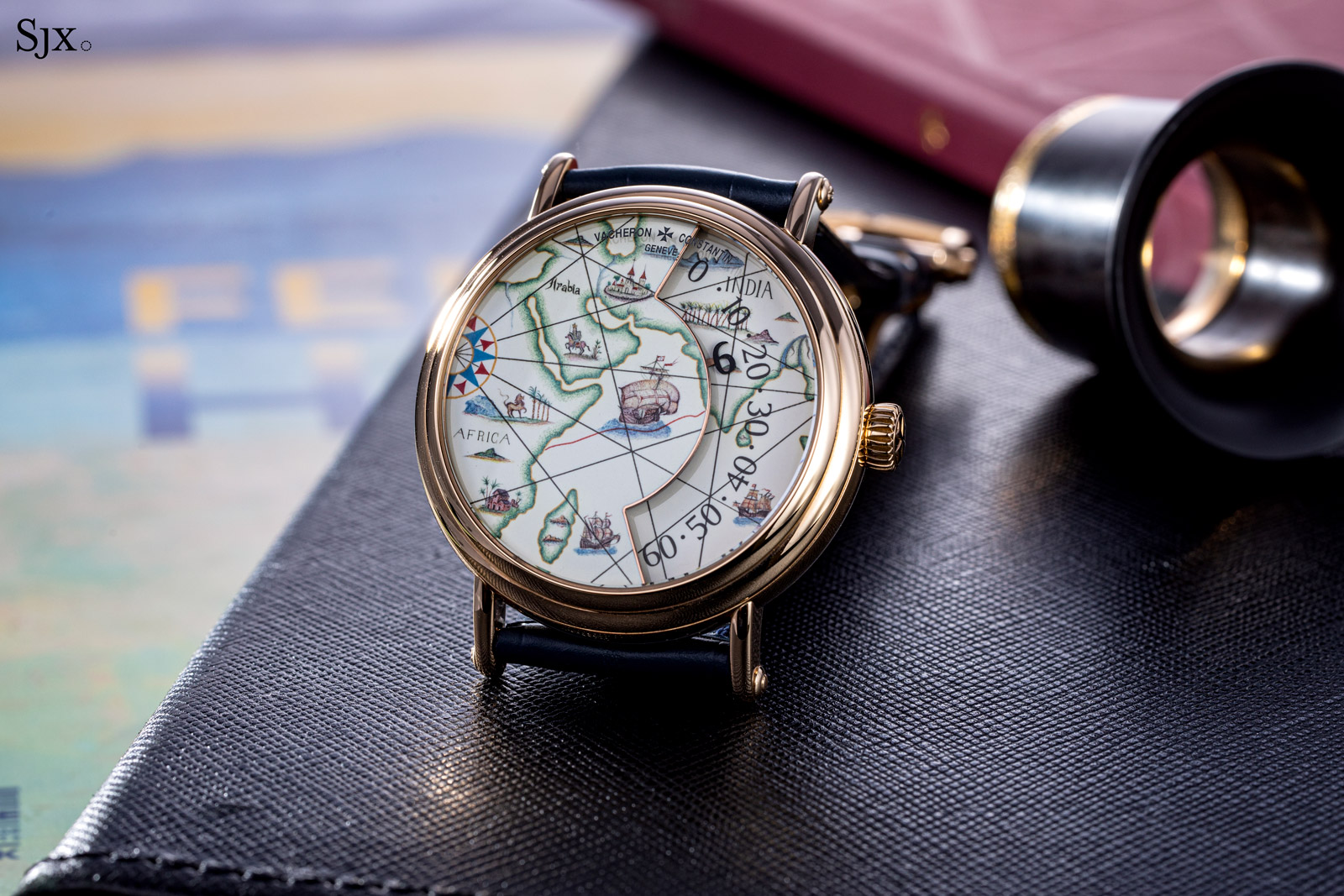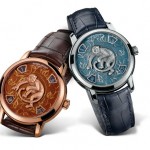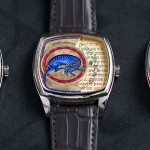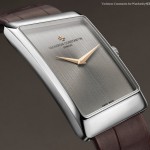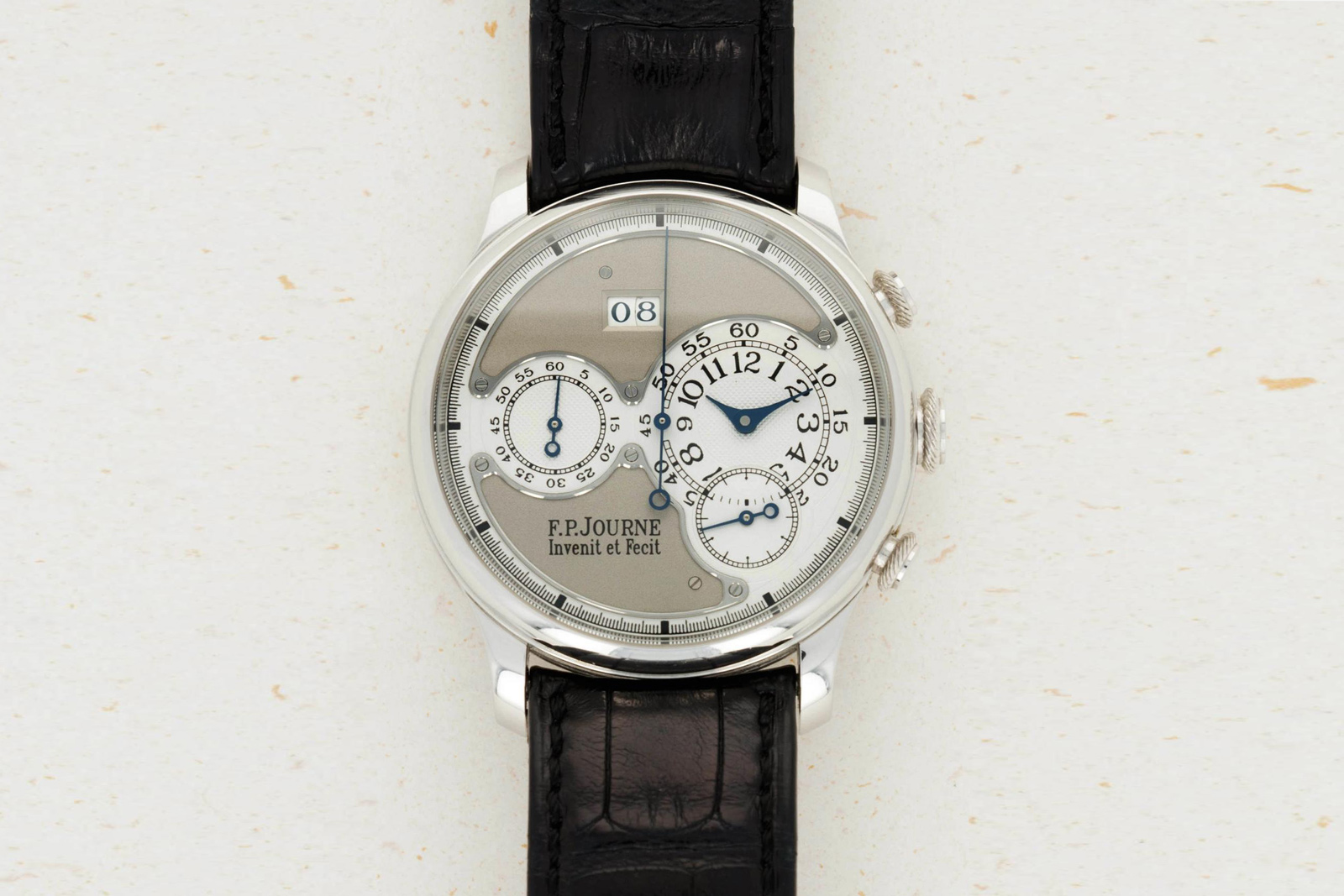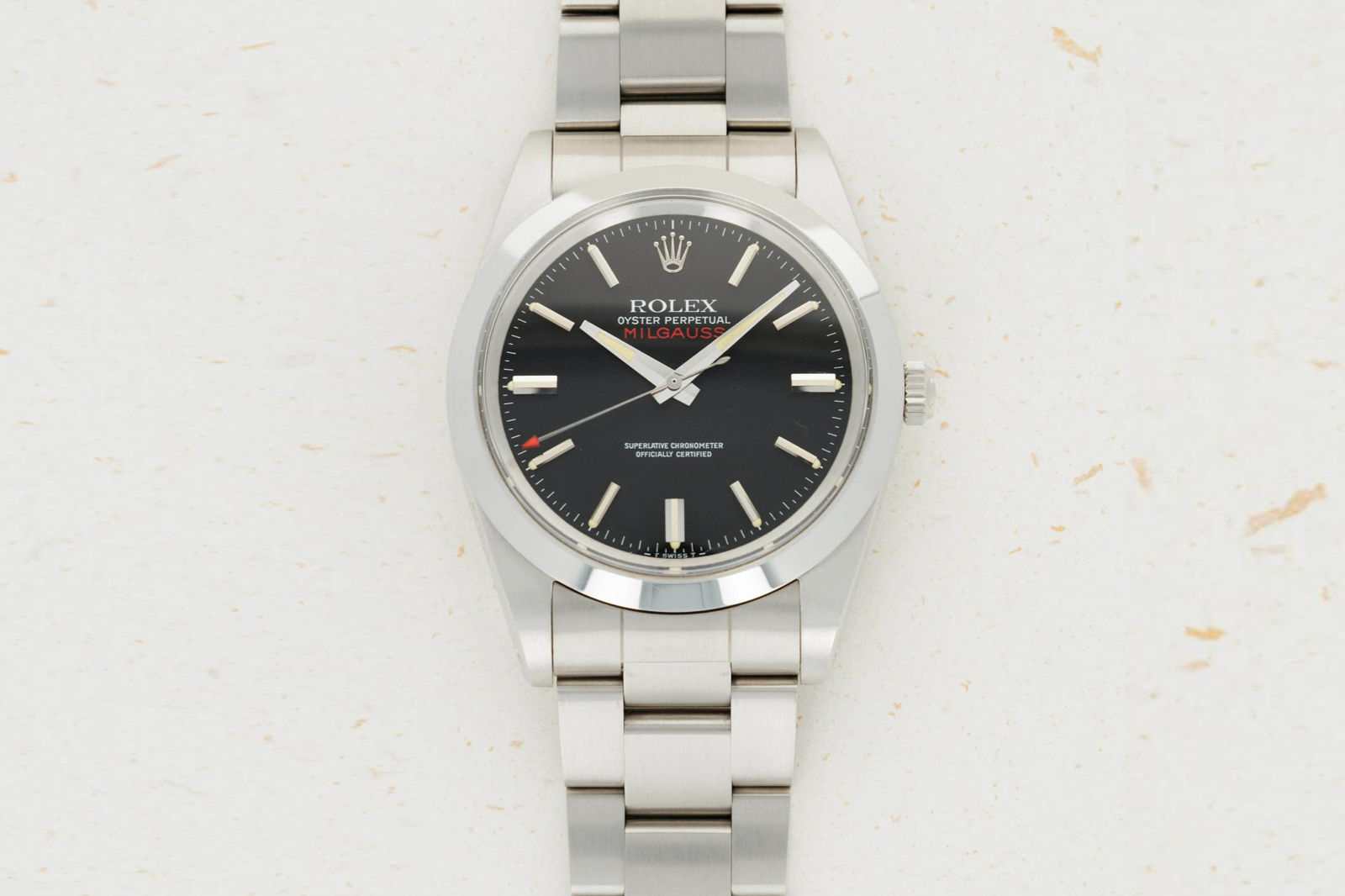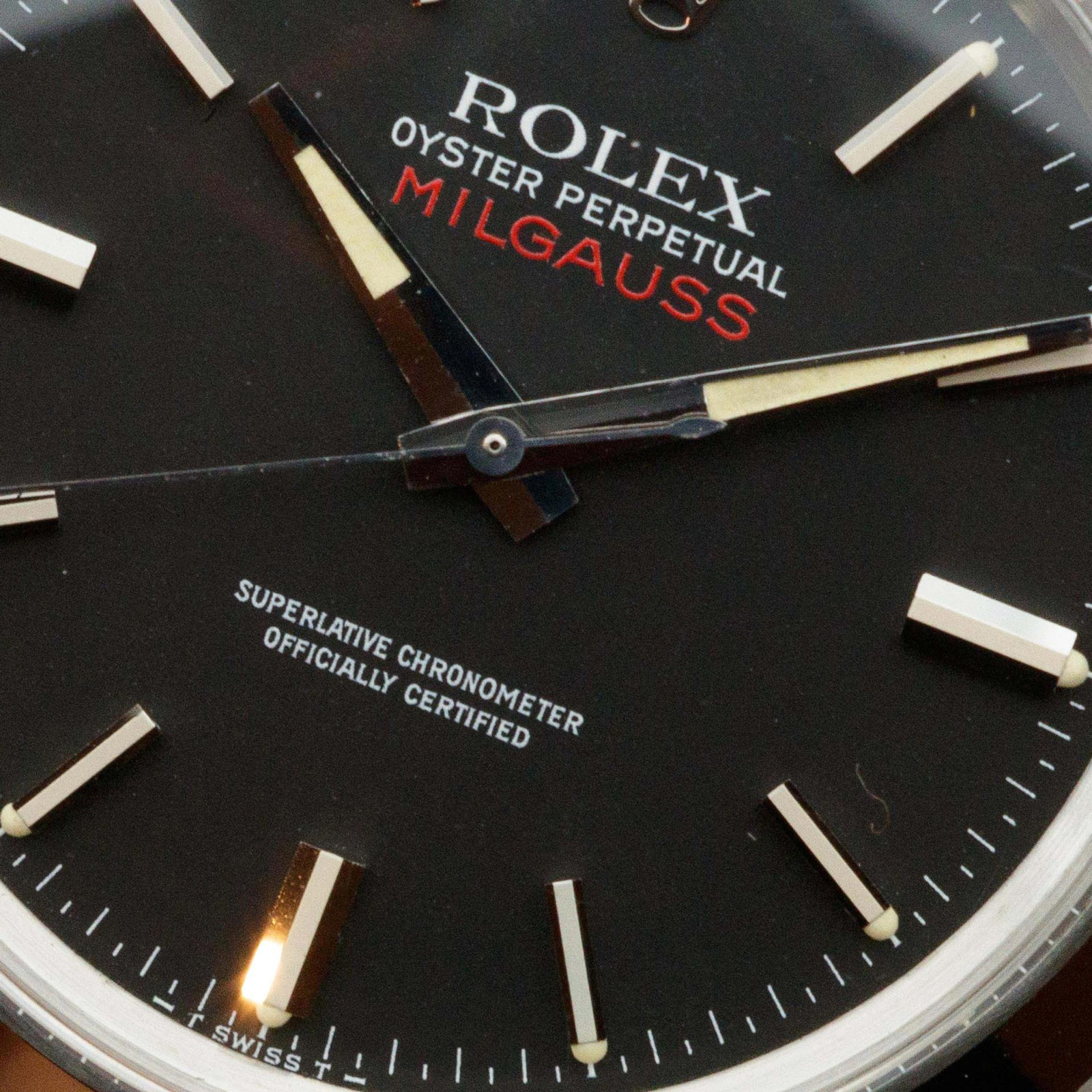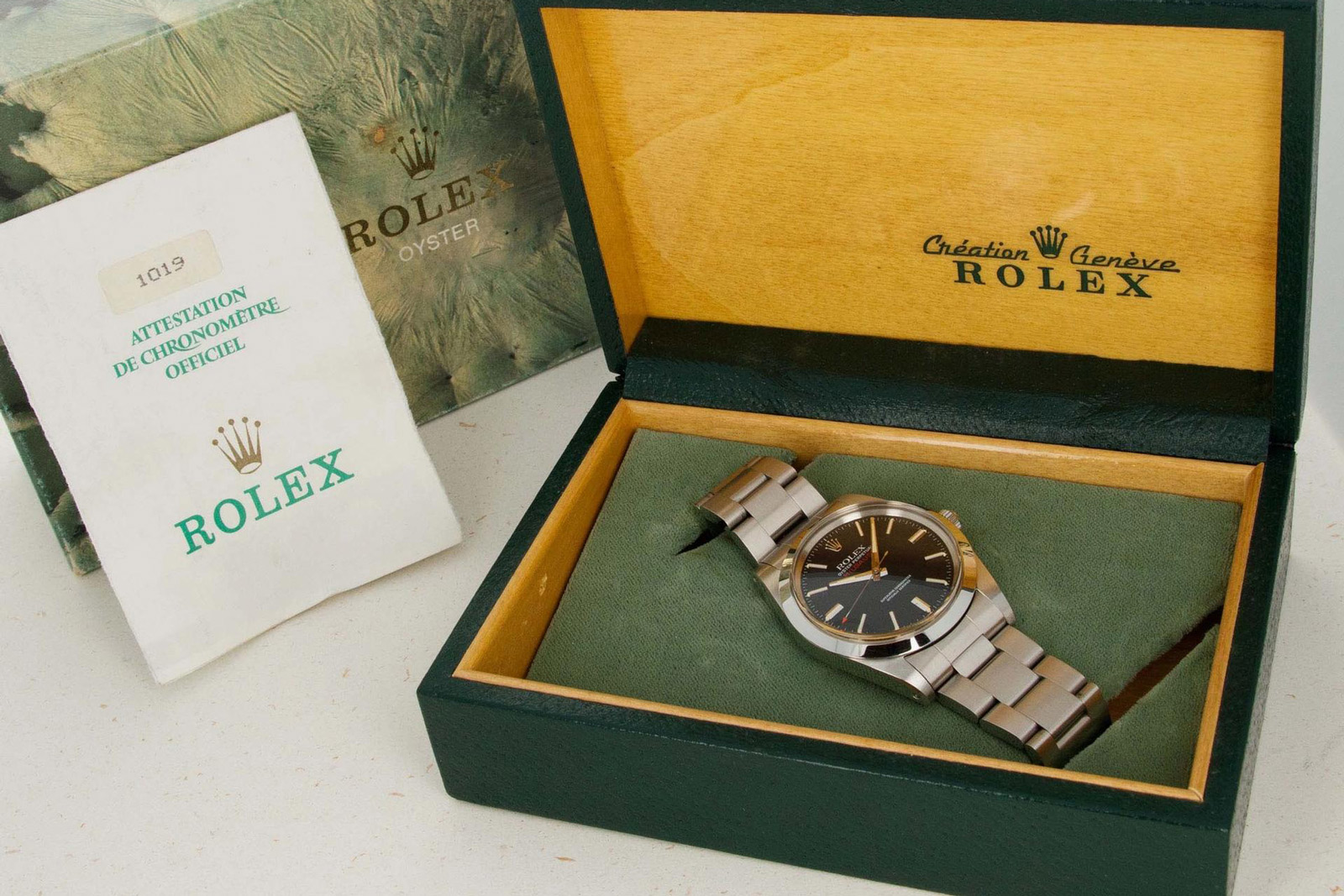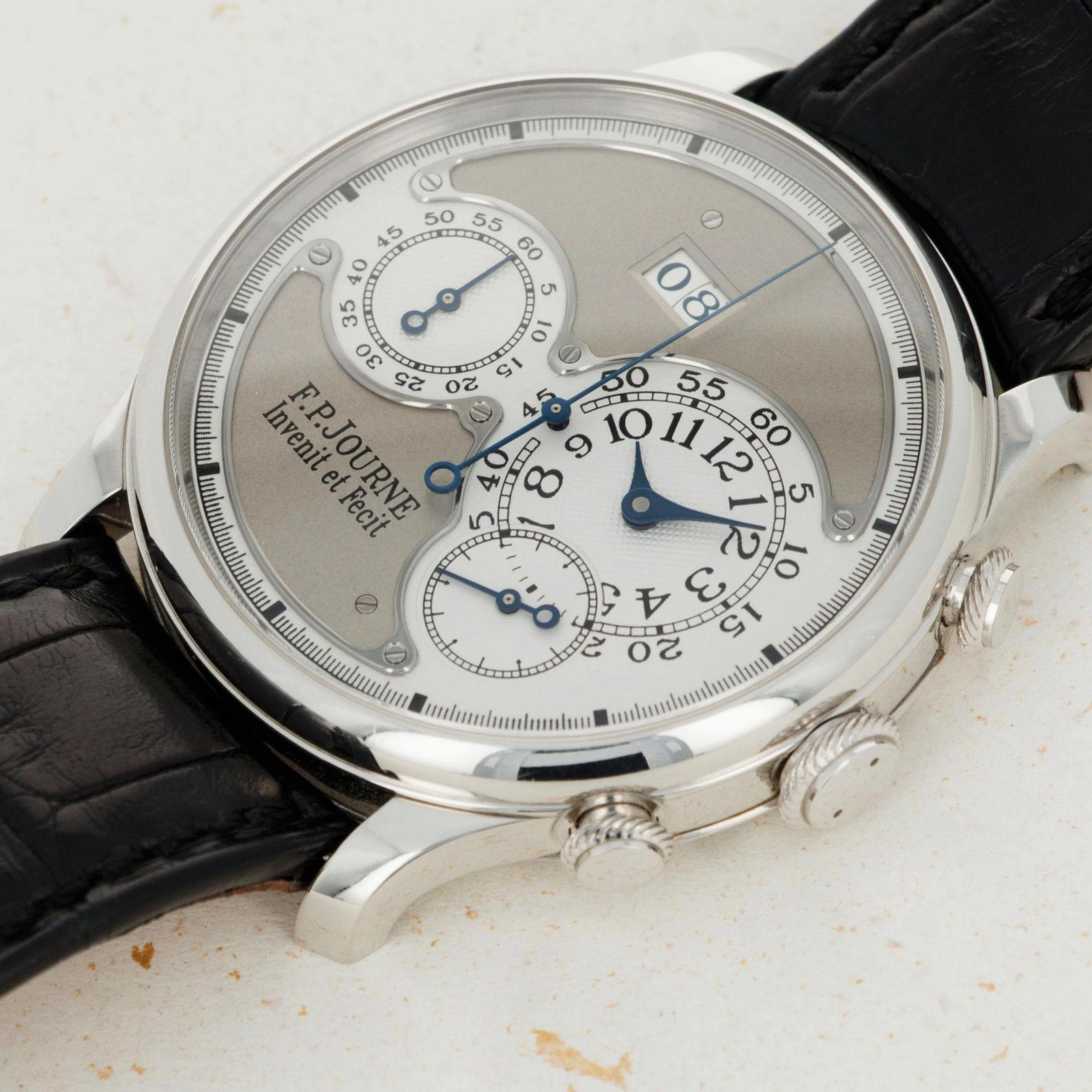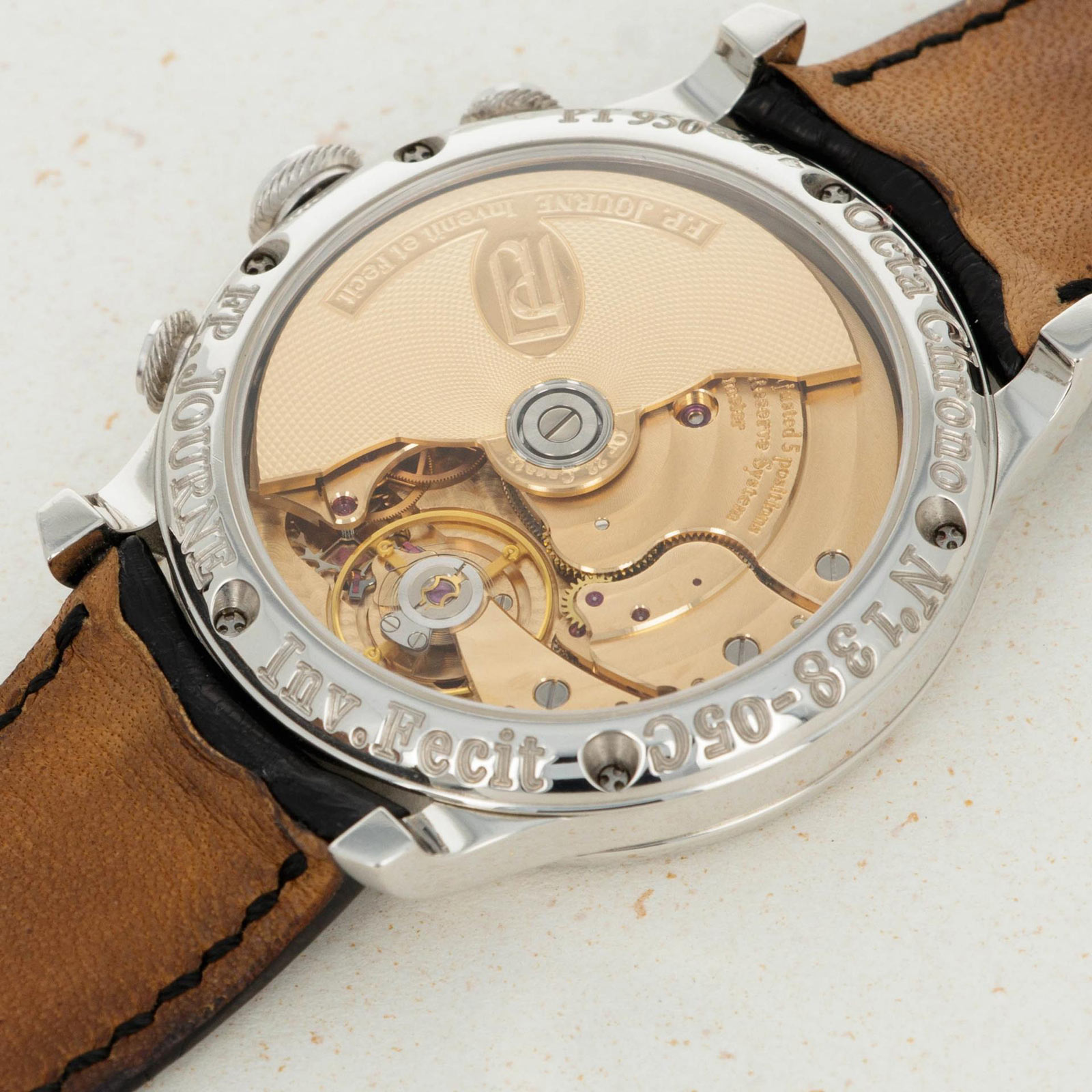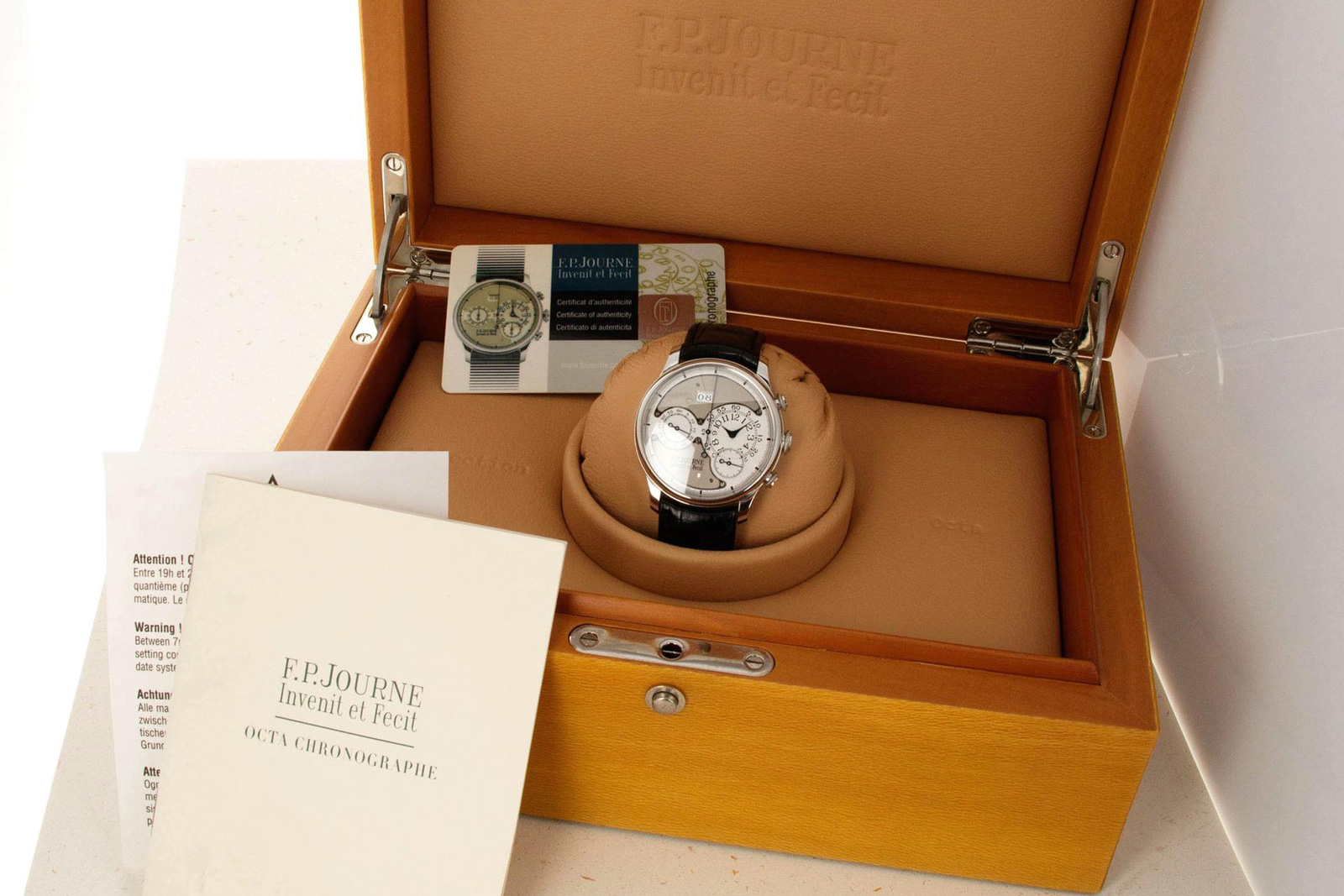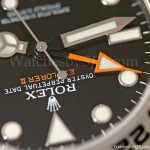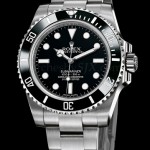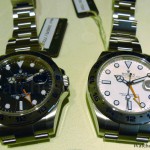Launched last year but perhaps overshadowed by mega complication like the Vermeer pocket watch and Traditionnelle split-seconds chronograph, the Métiers d’Art Tribute to Great Explorers – Vasco da Gama was the latest in Vacheron Constantin’s long-running series of antiquarian-map watches dedicated to noted historical seafarers.
The Vasco da Gama, along with its siblings in the series, exemplify the brand’s tagline for 2021 – “Classic with a Twist” – with a case that evokes 1980s design but an enamelled dial and time display that are both quirky and interesting.
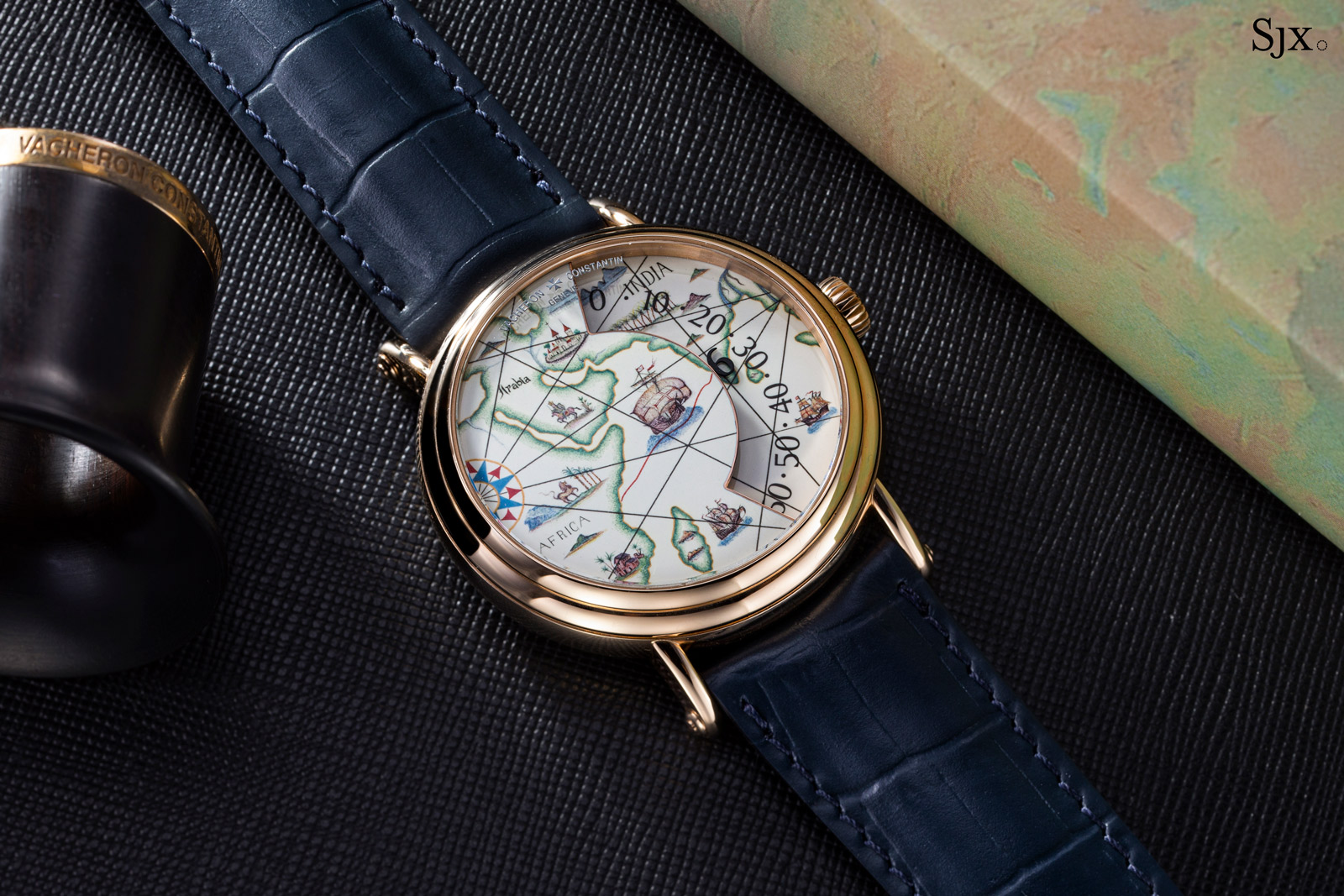
The Vasco da Gama is one third of the Métiers d’Art Tribute to Great Explorers collection. The other two watches that make up the rest of the line up are naturally dedicated to “Great Explorers”, namely Bartolomeu Dias and Pedro Alvarez Cabral, fellow Portuguese sailors who were contemporaries of da Gama. They are each mechanically identical to the Vasco da Gama and differ only in terms of the dial motif.
Each of the dials depict the journey of the respective explorer who were professional seamen who charted the world during the Age of Discovery, the period between the 15th and 18th centuries that saw the rise of European empires as their ships roamed the world.
The watch outlines the first voyage of da Gama, the first European to reach India by sea. In 1497, he led his fleet of four ships on the two-year journey, setting sail south Lisbon, then around the Cape of Good Hope, and onto to Calicut, the city on the southern tip of India once a centre for the spice trade.
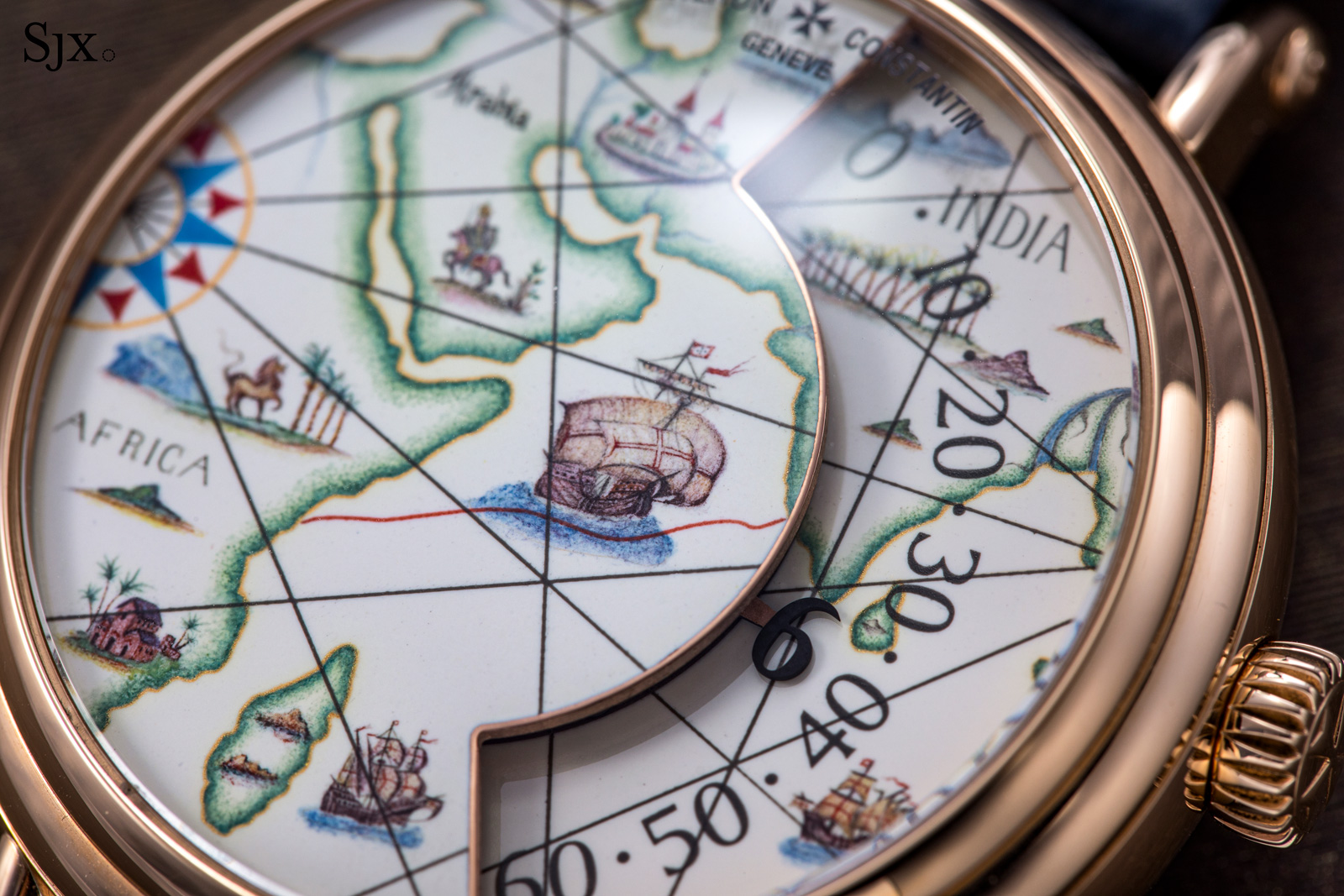
The dial depicts the Indian Ocean flanked by the Africa and India
Initial thoughts
Having evolved from the Mercator, the Tribute to Great Explorers collection dates back almost three decades (more on that below) and remains interesting all these years later. The watches remain unique in combining enamel miniature painting of an antiquarian map with a novel time display.
All of the Great Explorers watches all stick to the same theme: the dials depict 16th century European maps. The Vasco da Gama, for instance, is inspired by the Miller Atlas, a map drawn by Portuguese cartographers in 1519. So if you like Age of Discovery maps reproduced in miniature on a watch dial, then Vacheron Constantin is the go-to watchmaker since no other brand does anything similar.
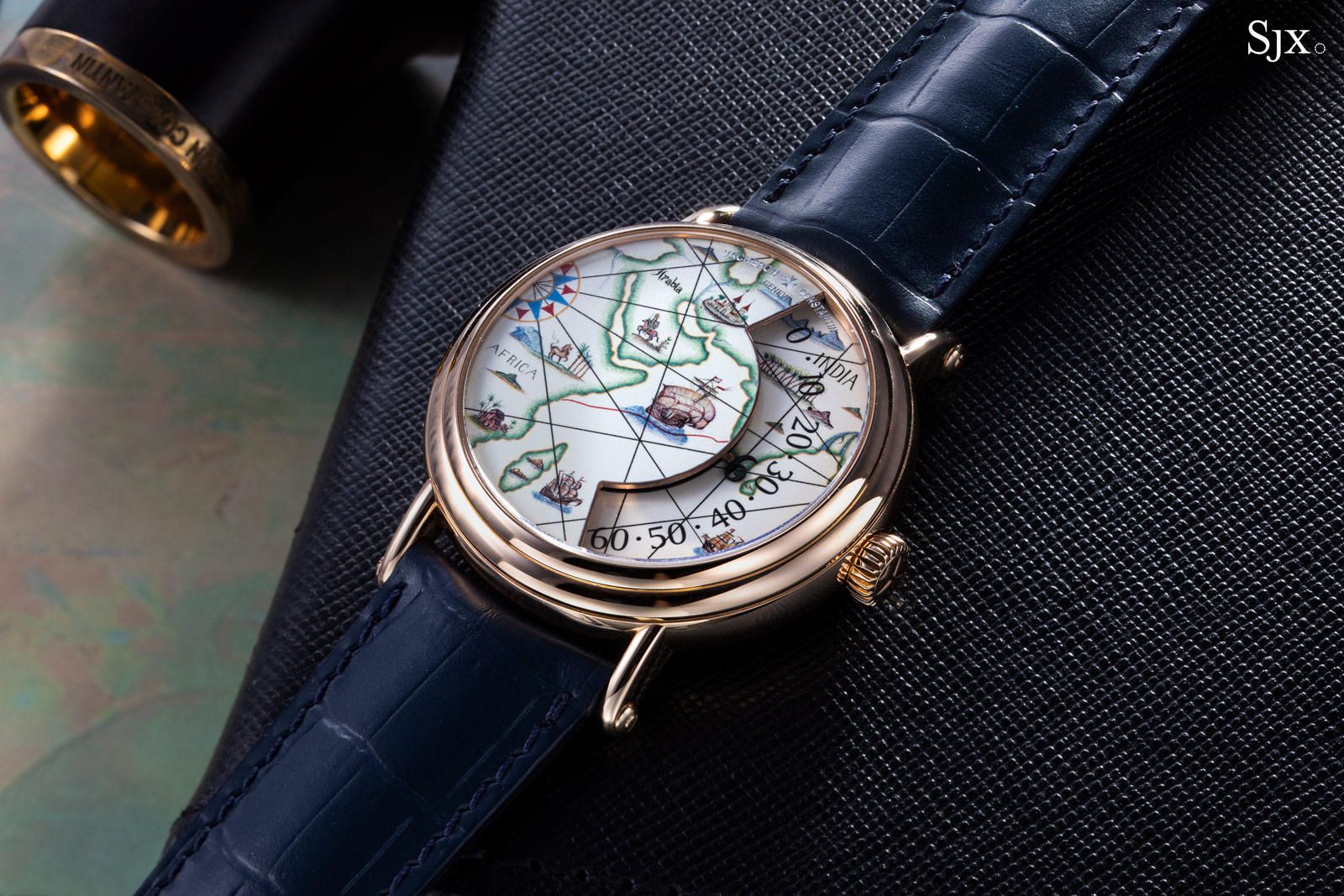
Like the vintage Patek Philippe cloisonné world time watches, the Great Explorers watches are defined by their enamelled cartography, but each model bears a different map. The Vasco da Gama depicts the final leg of da Gama’s journey to India.
Unlike the earlier generation of Great Explorers watches, which was introduced in 2004 and 2008, the Vasco da Gama (as well as its counterparts in the current trio) utilises a more impressionistic style for the map. While the maps are still miniature enamel, the motifs and markings have been streamlined.
There are fewer geographical names on the dial, while the depictions of figures and objects rely on shading and diffuse lines, instead of the tight, bold outlines of the earlier versions. The result is a map that looks slightly more modern and contrasts with the obviously classical style of past models.
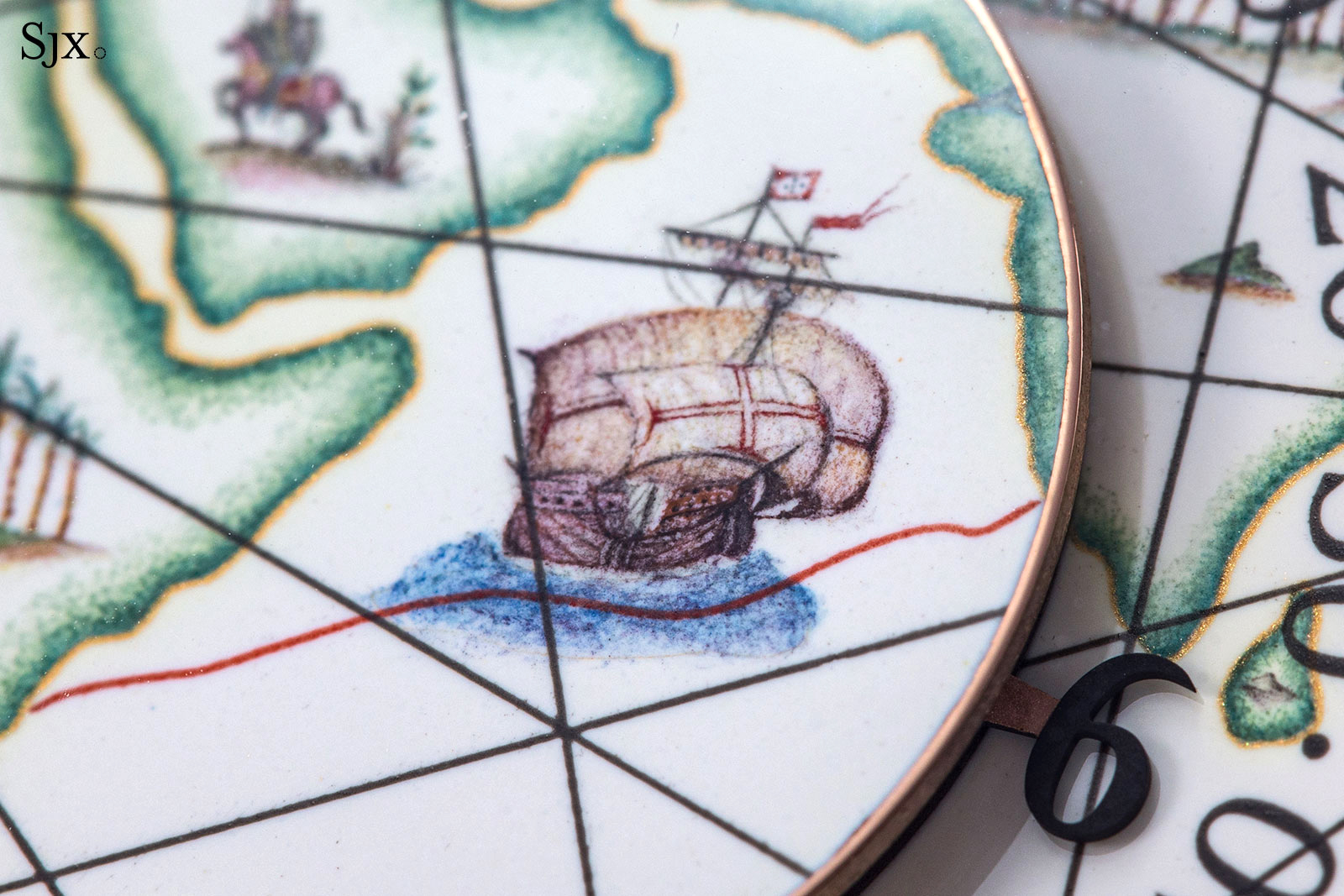
The updated style makes sense, especially for anyone who already owns a Great Explorers watch. Intricate as the enamelling was on the earlier generation of watches, most of them appeared identical at a distance. The Vasco da Gama and its siblings are clearly distinct, different enough to appeal to someone who already owns an older model.
Priced at US$121,000 – all three current Great Explorers watches cost the same – the Vasco da Gama might seem steep for a time-only watch but it is a special one. Both the artisanal dial decoration and wandering hours time display go a long way to rationalising the price. And it helps the ultra-thin cal. 1120 AT within is a fine movement that is also finely finished.
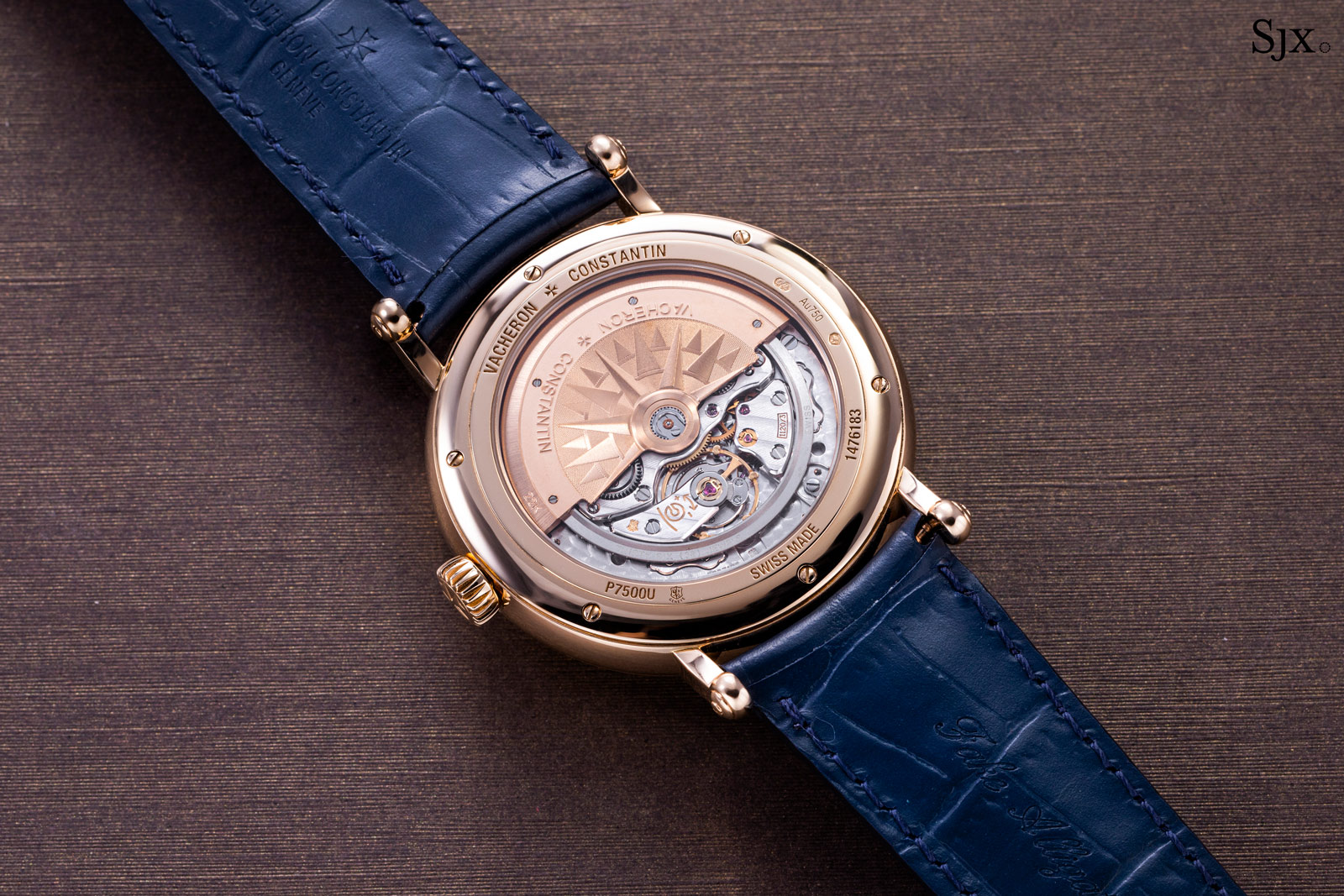
The cal. 1120 AT
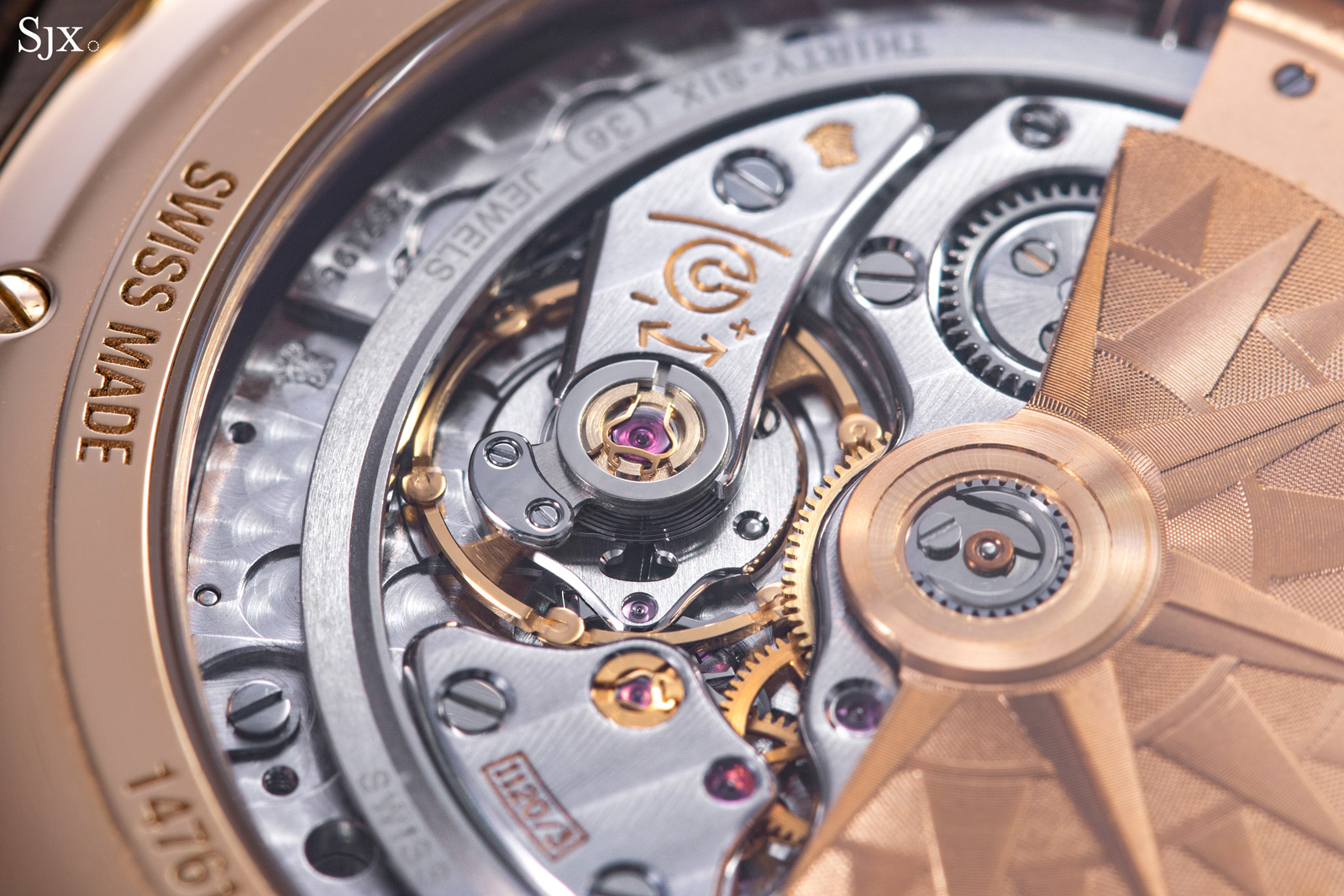
And its free-sprung, adjustable mass balance
While Vacheron Constantin has done many iterations on the same idea, the total number of such watches remains small – just 10 pieces each for the current trio, and a totality in the high hundreds over three decades. At the same time, there’s nothing else quite like them on the market. All that helps preserve the appeal of the Vasco da Gama and its compatriots. So all in all it’s a fair proposition that offers intrinsic value for those who cherish the design.
The Mercator’s successor
The Vasco da Gama is a successor to the Mercator, which was introduced by the brand in 1994. Originally conceived by Jean Genbrugge, an independent enameller and watchmaker based in Belgium, the Mercator watch was a commercial success. So much so that Vacheron Constantin kept it in the catalogue for a decade and produced dozens of iterations.
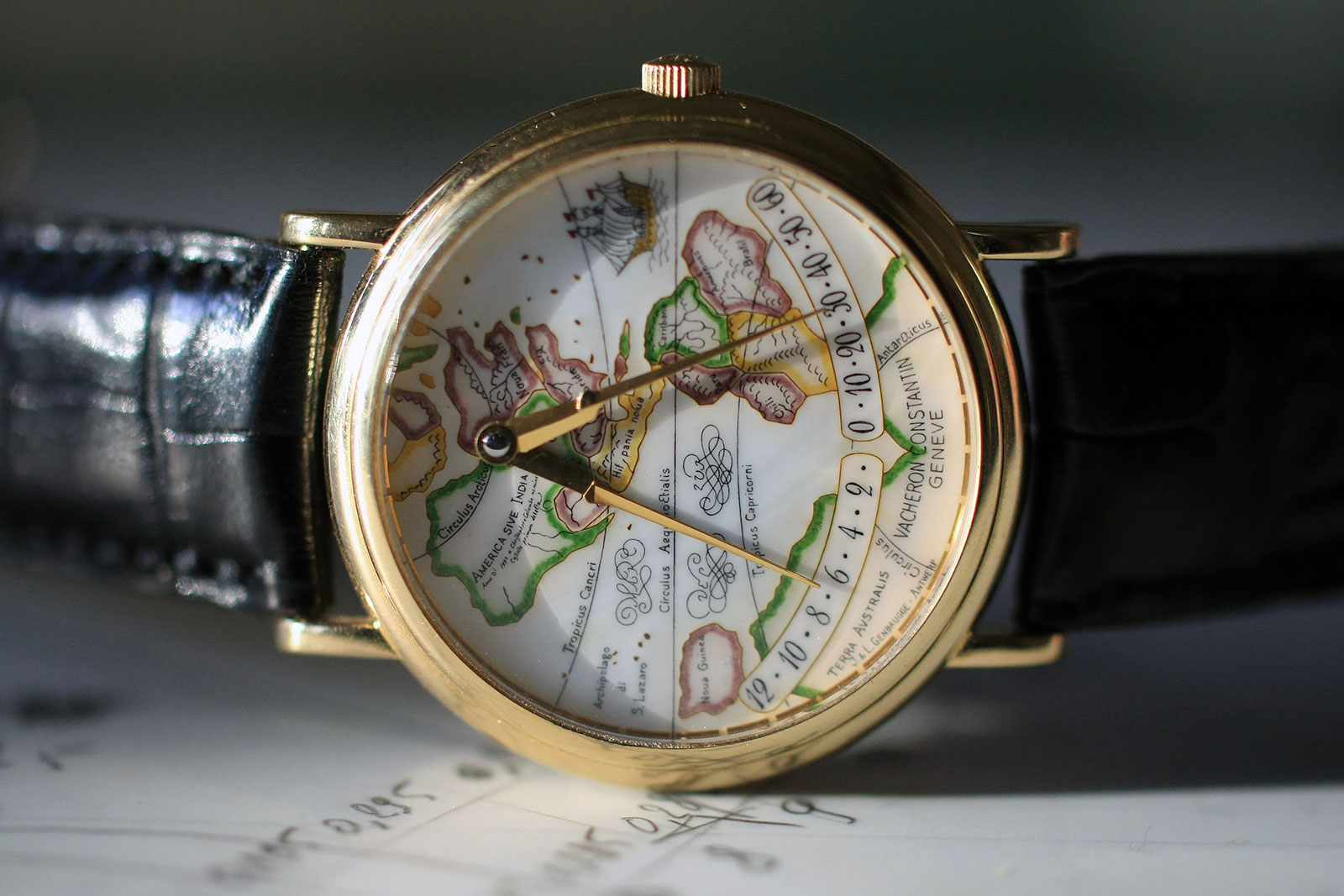
The prototype Mercator watch, with a fired enamel dial made by none other than Mr Genbrugge. Photo – Watch Collector in Luxembourg
The Mercator featured a double-retrograde hour and minute display that took the form of a compass. After it was discontinued in 2004, it was succeeded by the first Tribute to Great Explorers pair, dedicated to Magellan and Zheng He respectively. The first Great Explorers watches told the time with a wandering hours, which has since become the de facto time display for many of Vacheron Constantin’s Metiers d’Art watches since it allows for most of the dial to be a blank canvas for enamel.
The inaugural pair of Great Explorers was followed by the Christopher Columbus and Marco Polo duo of 2008. A 13-year hiatus followed before the current trio of Great Explorers watches were unveiled last year, including the Vasco da Gama.
Wandering in space and time
Two elements set the Vasco da Gama apart from its peer in the same price category – the miniature enamel painting and also the cleverly integrated wandering hours. In contrast, most metiers d’art watches have conventional, two-handed time displays.
While a dial painted with a map isn’t novel, the Vasco da Gama is different in that the map occupies the entire dial. Not even the time-telling function gets in the way, since there are no hands and few numerals.
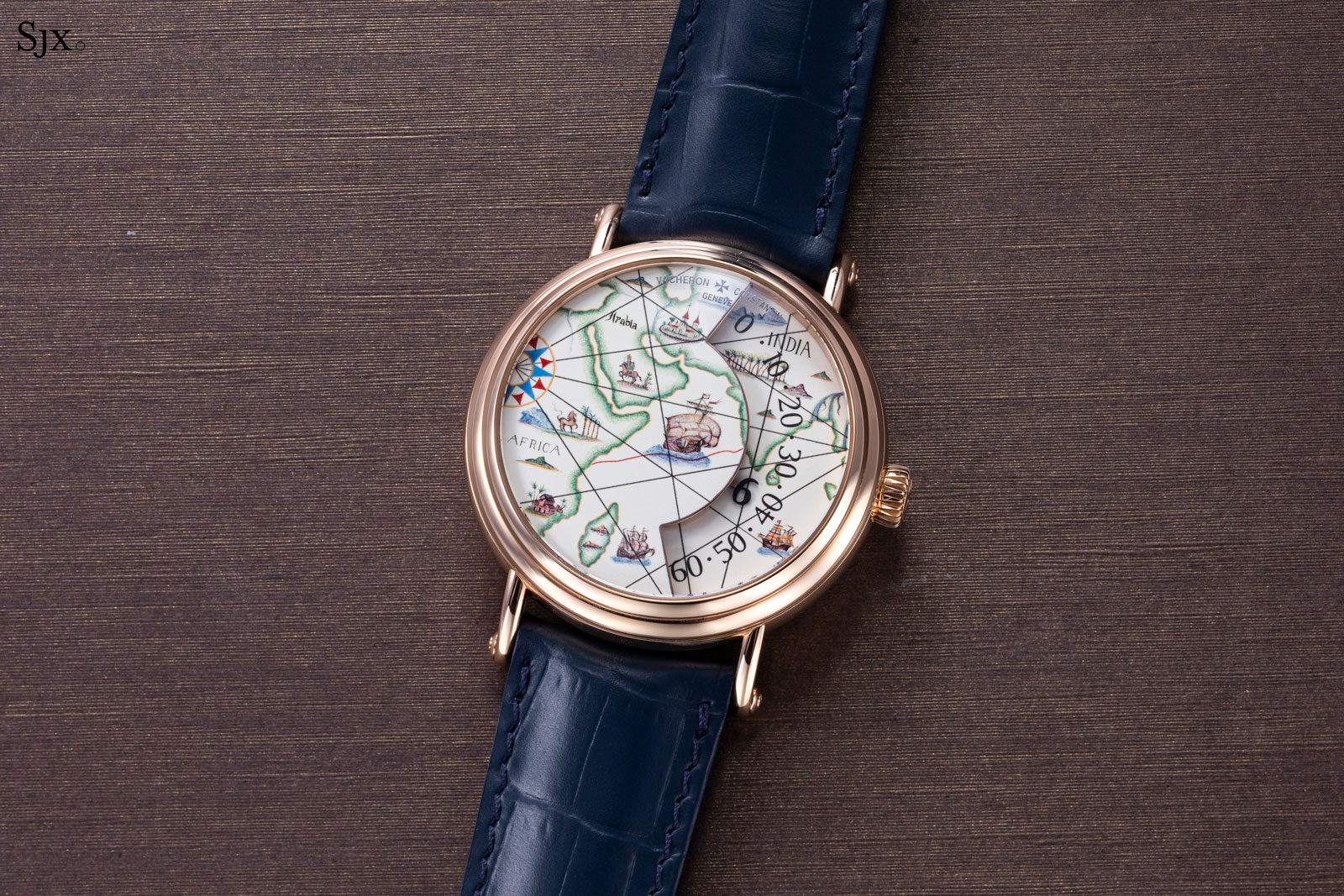
In addition, the dial motif itself is interesting because of its historical inspiration, the Miller Atlas, a richly-illustrated map incorporating a Portolan chart that is decorated with the flora, fauna, and peoples thought to inhabit the various corners of the world.
The key elements of the Miller Atlas been recreated on the dial, giving the watch an antiquarian feel, but one updated for the modern world with the bright white background. The result is immediately recognisable from across a room as one of the Great Explorers watches.
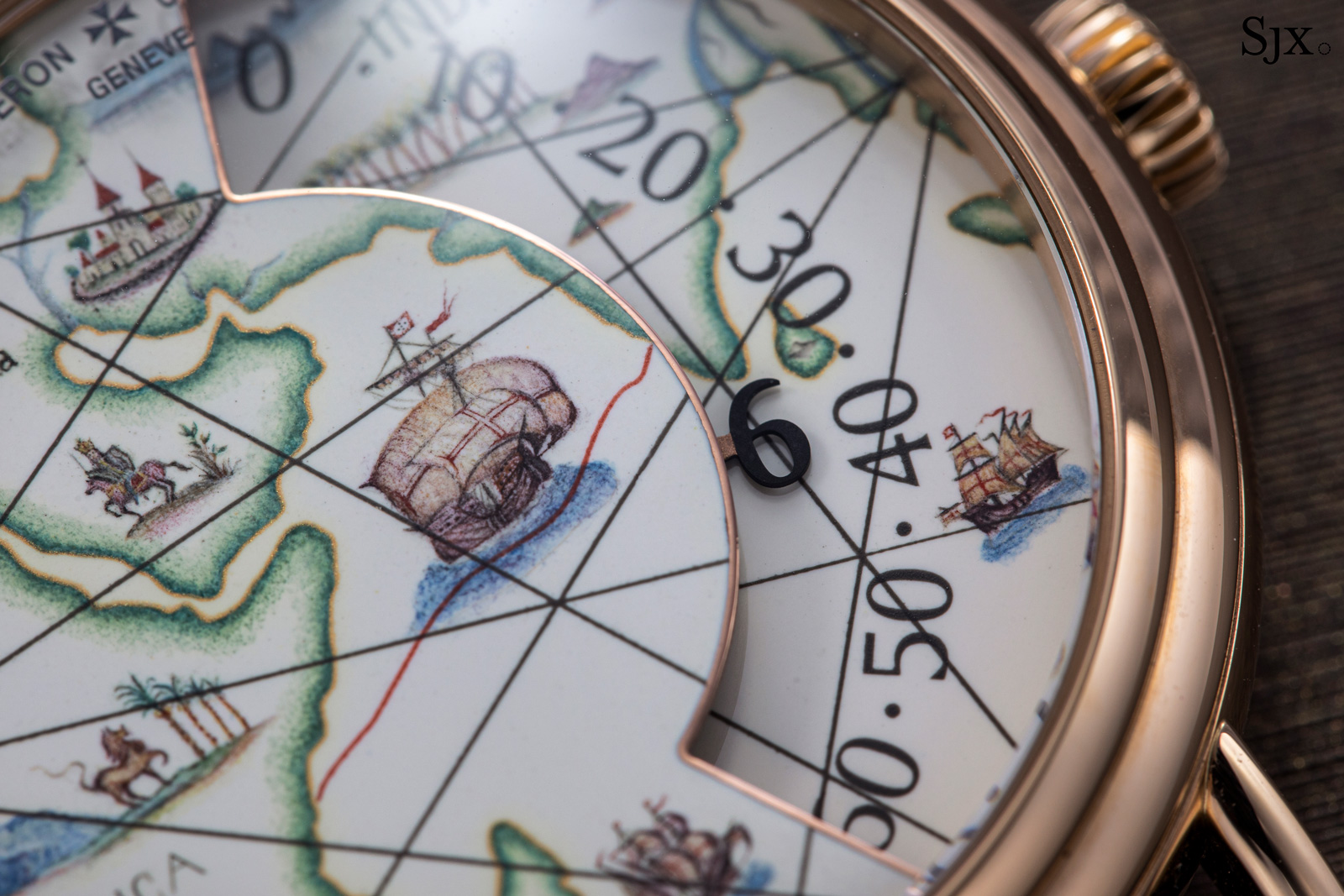
The dial is made up of solid 18k white gold discs covered in fired enamel
And as is expected of a Vacheron Constantin’s Métiers d’Art watch, the enamel dial is exceptionally high quality, with few imperfections discernible even up close; neither bubbles nor unevenness is visible under magnification.
The style of miniature painting, however, might not be for everyone. As discussed earlier, the impressionistic style means the illustrations are not high resolution. Instead of sharp, distinct strokes, the objects and continents are formed with shaded lines and tiny dots, almost like the Ben-Day dots of a Lichtenstein painting. At arm’s length, however, the pixelised nature of the painting is not evident.
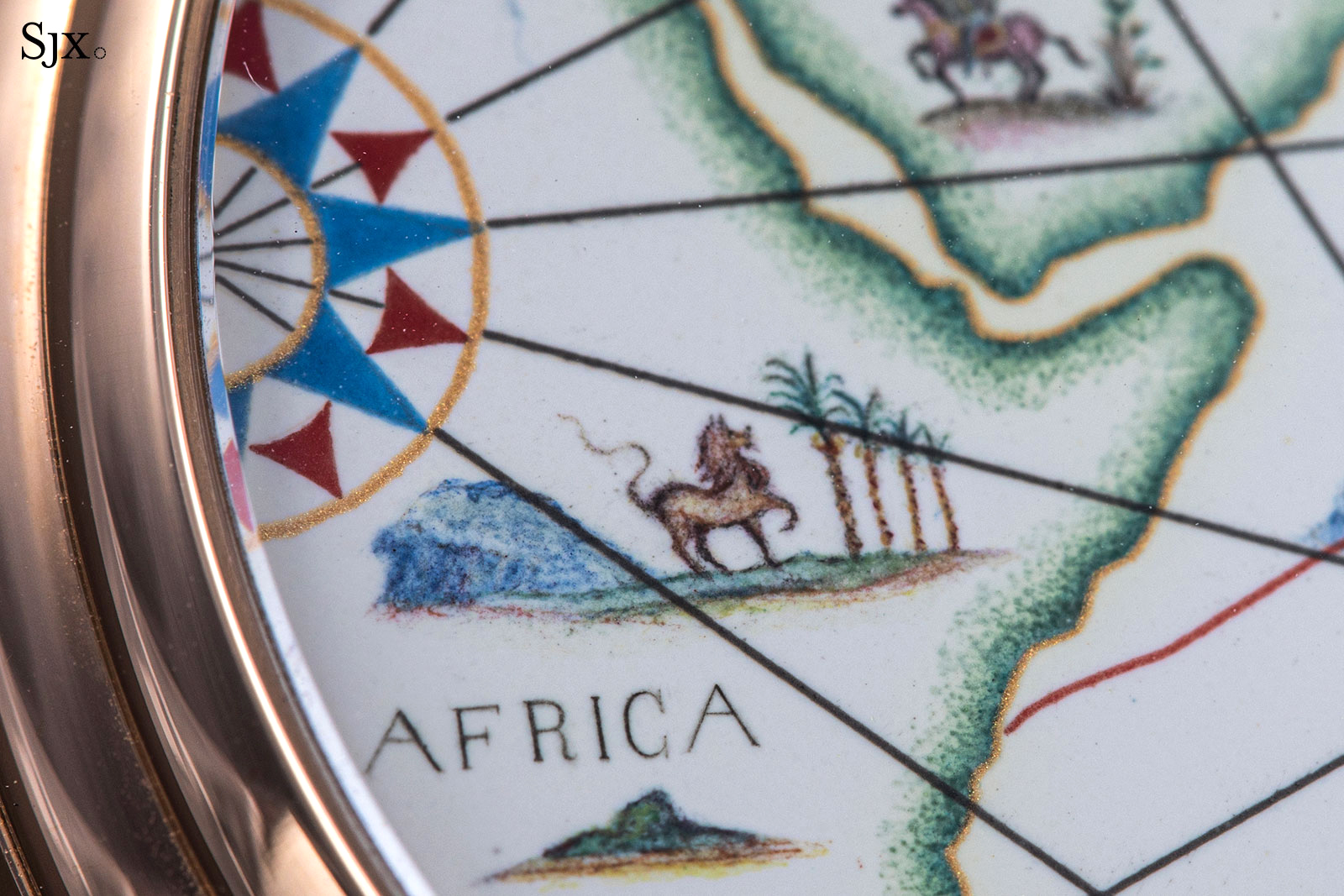
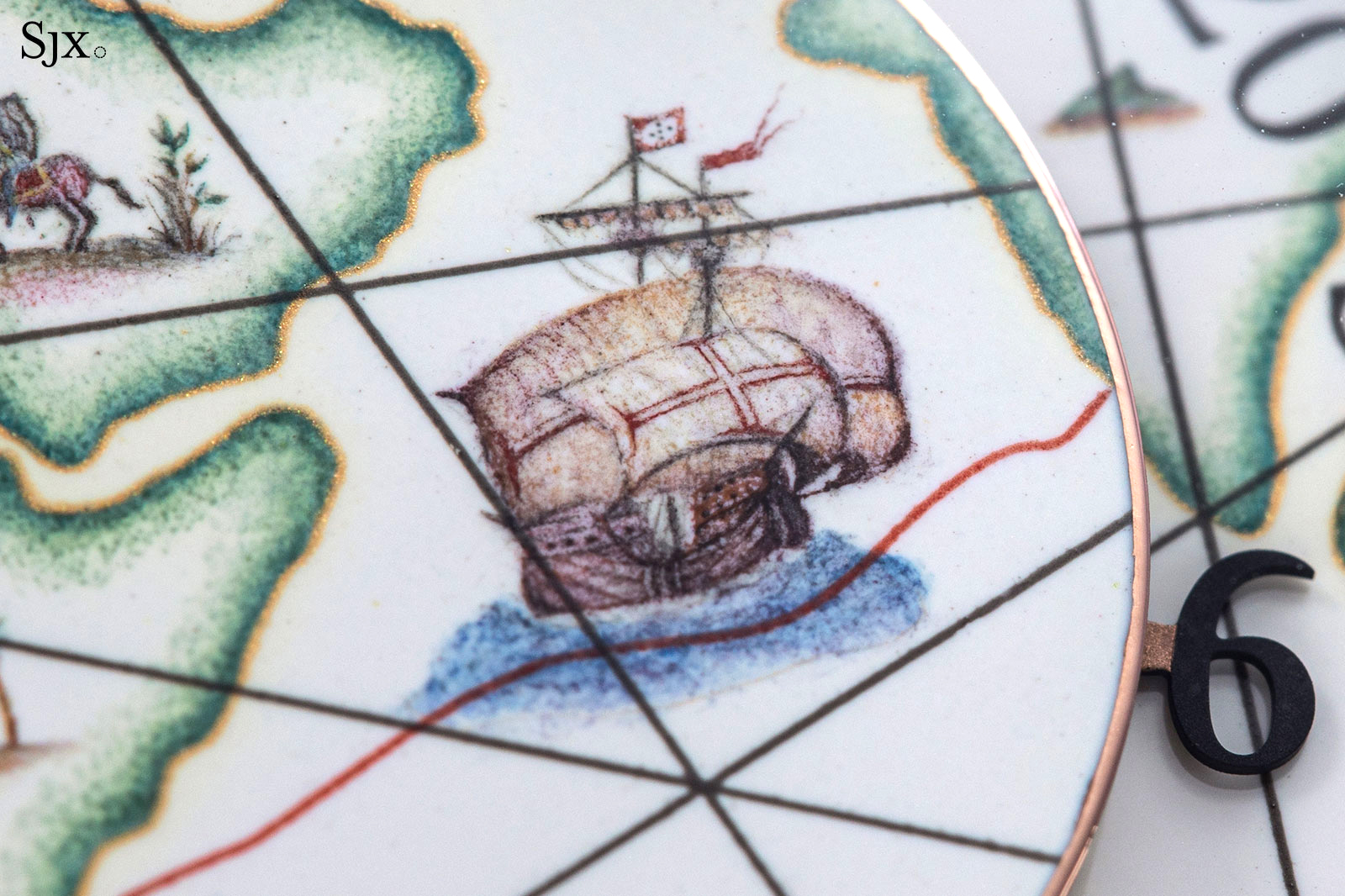
While the style of miniature painting is a matter of personal taste, the geographical markings on the map feel a little untidy. The markings are rendered in different font types and sizes, along with varying kerning.
That’s historically correct as that’s how they are on the Miller Atlas, but the original map has the advantage of size. On a watch dial, the varied fonts seem incongruent – compared “Africa” and “Arabia” for instance.
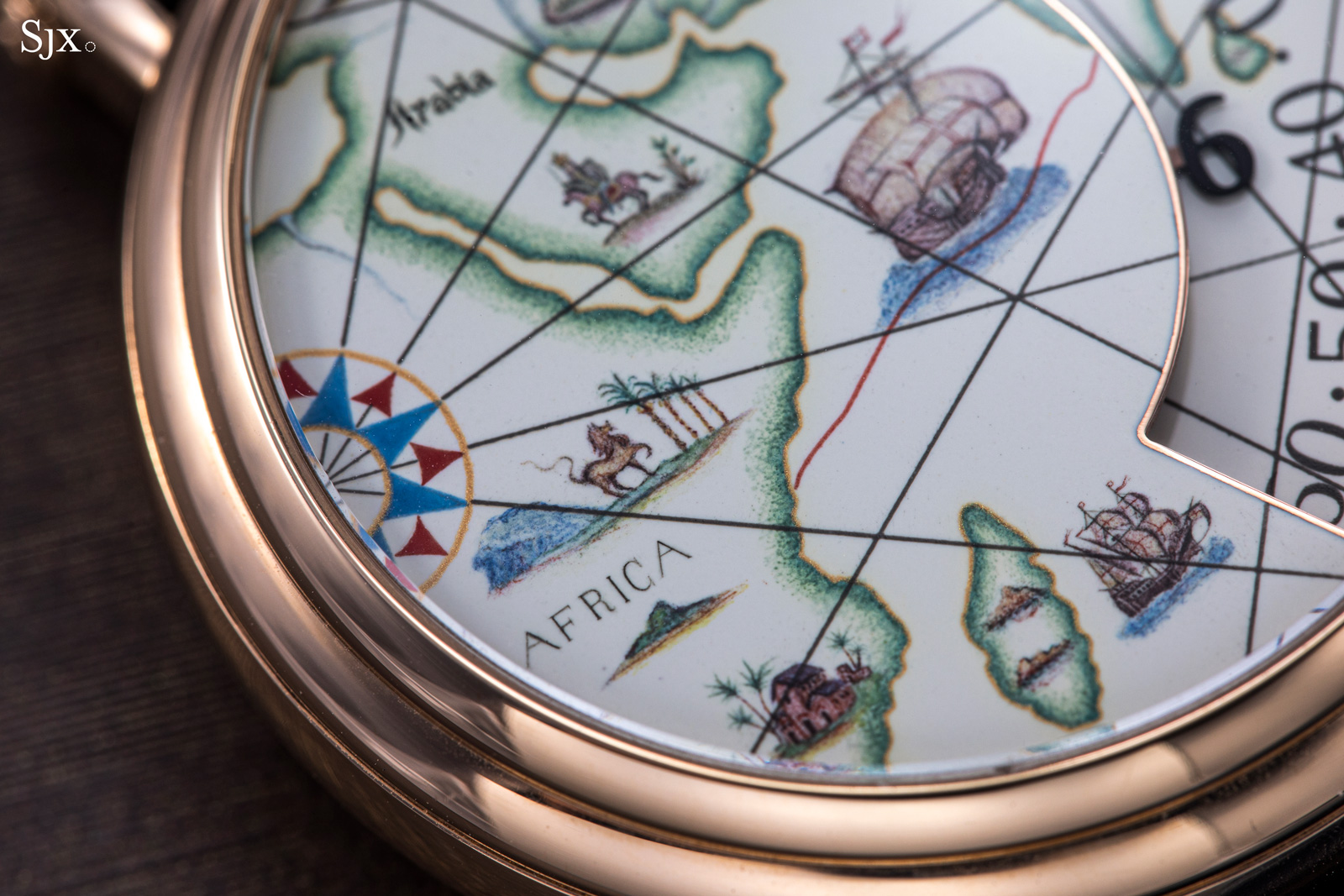
Nevertheless, the dial is still captivating, especially with the camouflaged time display.
The dial is essentially a two-level affair – the upper layer is purely for the enamel art, while the lower layer is for time-telling. That explains the upper layer having a fan-shaped cut-out across a third of the dial to reveal the minute scale.
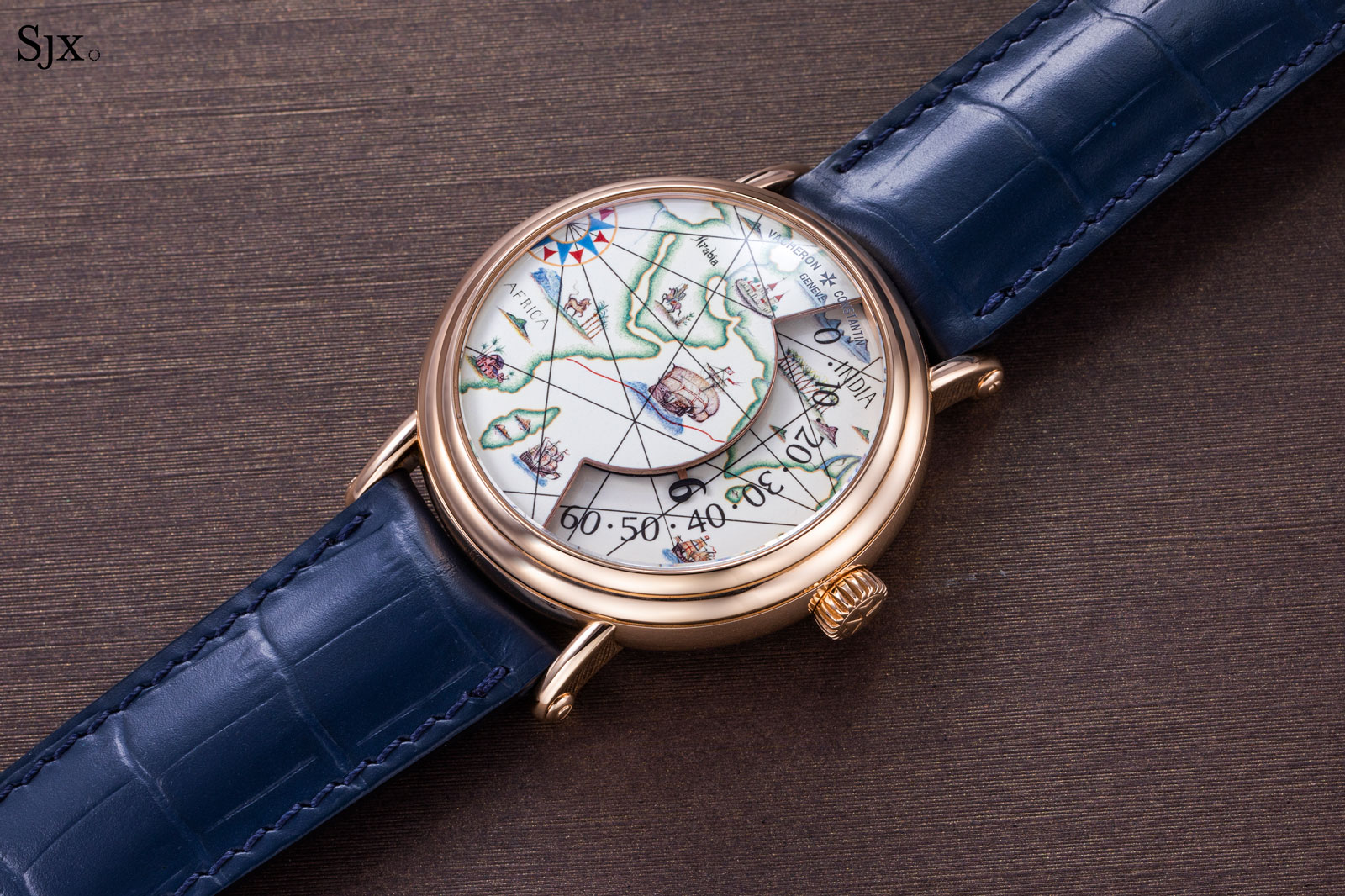
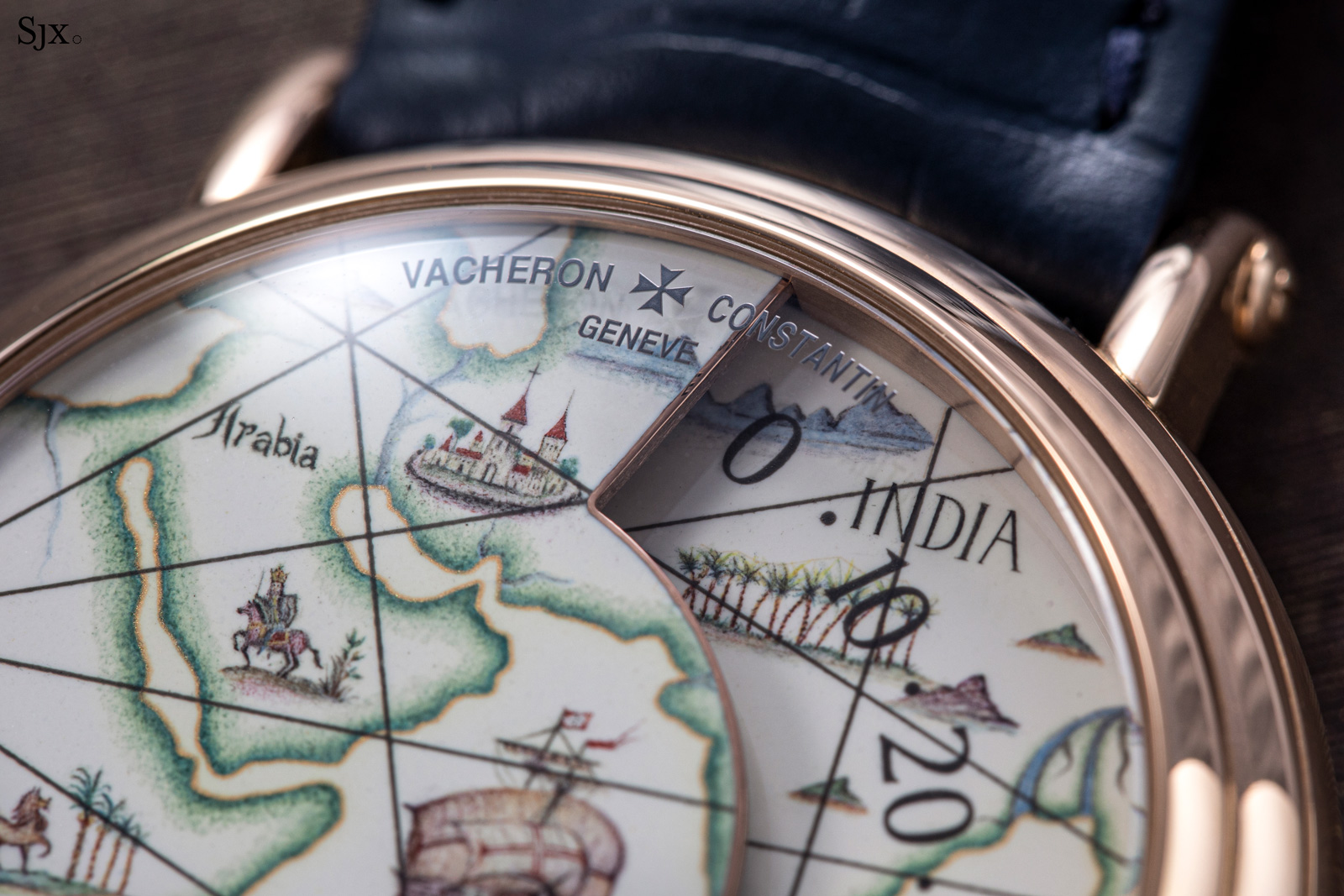
Time telling is accomplished with a centuries-old trick – the wandering hours.
Invented by Italian clockmakers known as the Campani brothers in the 17th century and found in large clocks, the complication consist of a three-armed bridge that holds a satellite disc at the end of each arm, with each disc carrying with four hour numerals, totalling 12 hours.
The periodic rotation of each satellite disc is coordinated by a Maltese cross (which coincidentally also forms the Vacheron Constantin logo), such that only one hour numerals shows up at a time. Over the course of an hour, the numeral sweeps across the fan-shaped opening to indicate the minutes.
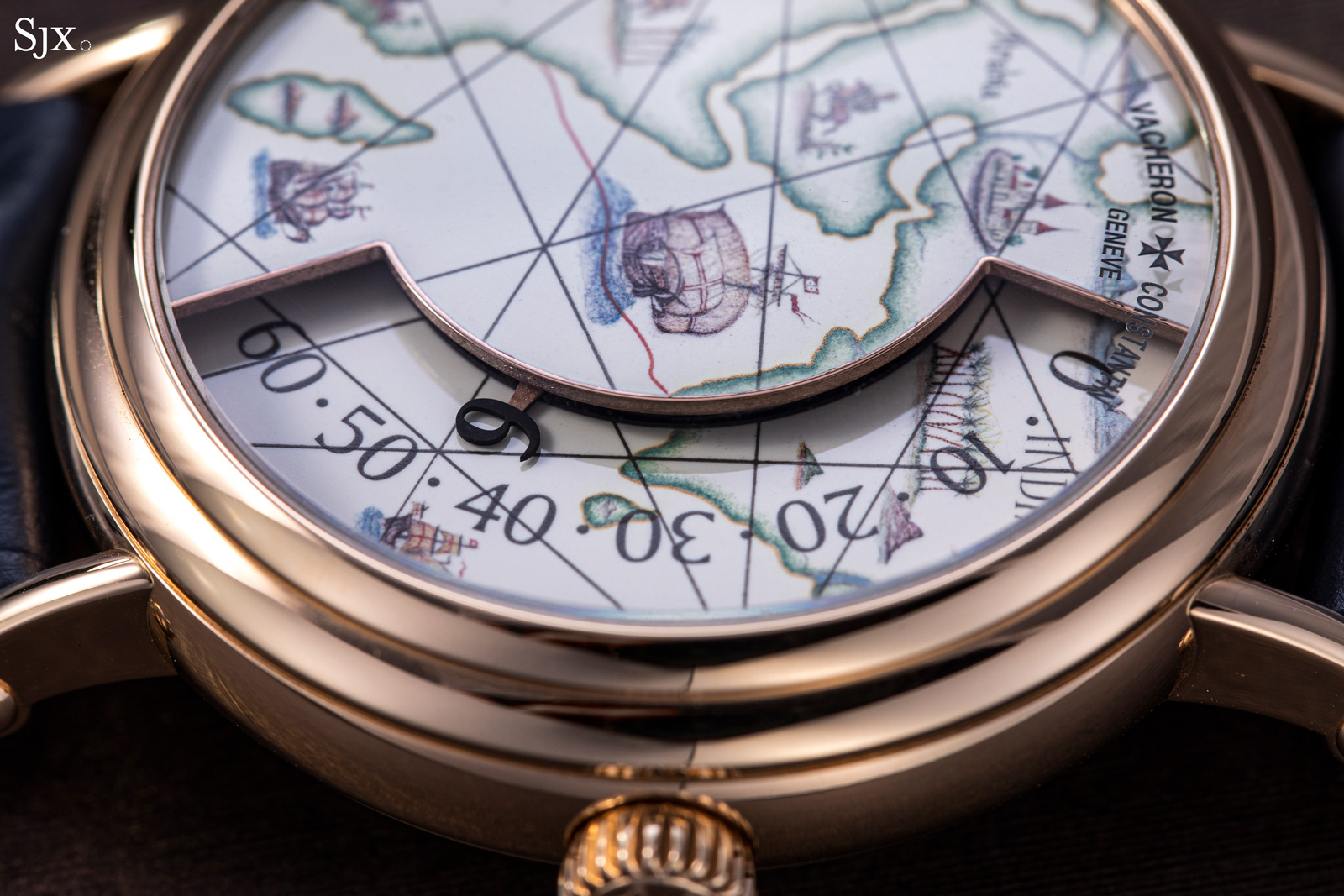
The time indicated above is just shy of 6:45
The wandering hours is not unique to Vacheron Constantin – Urwerk has its sci-fi interpretation of the concept while Audemars Piguet has the Star Wheel – but Vacheron Constantin is singular in applying artisanal decoration to the complication.
Notably, the complication works especially well with Vacheron Constantin’s antiquarian-map dials. It blends into the map motif nicely, allowing the display to be legible enough while not interrupting the miniature painting. The fan-shaped opening is an elegant solution that gives the watch character while remaining functionally discreet.
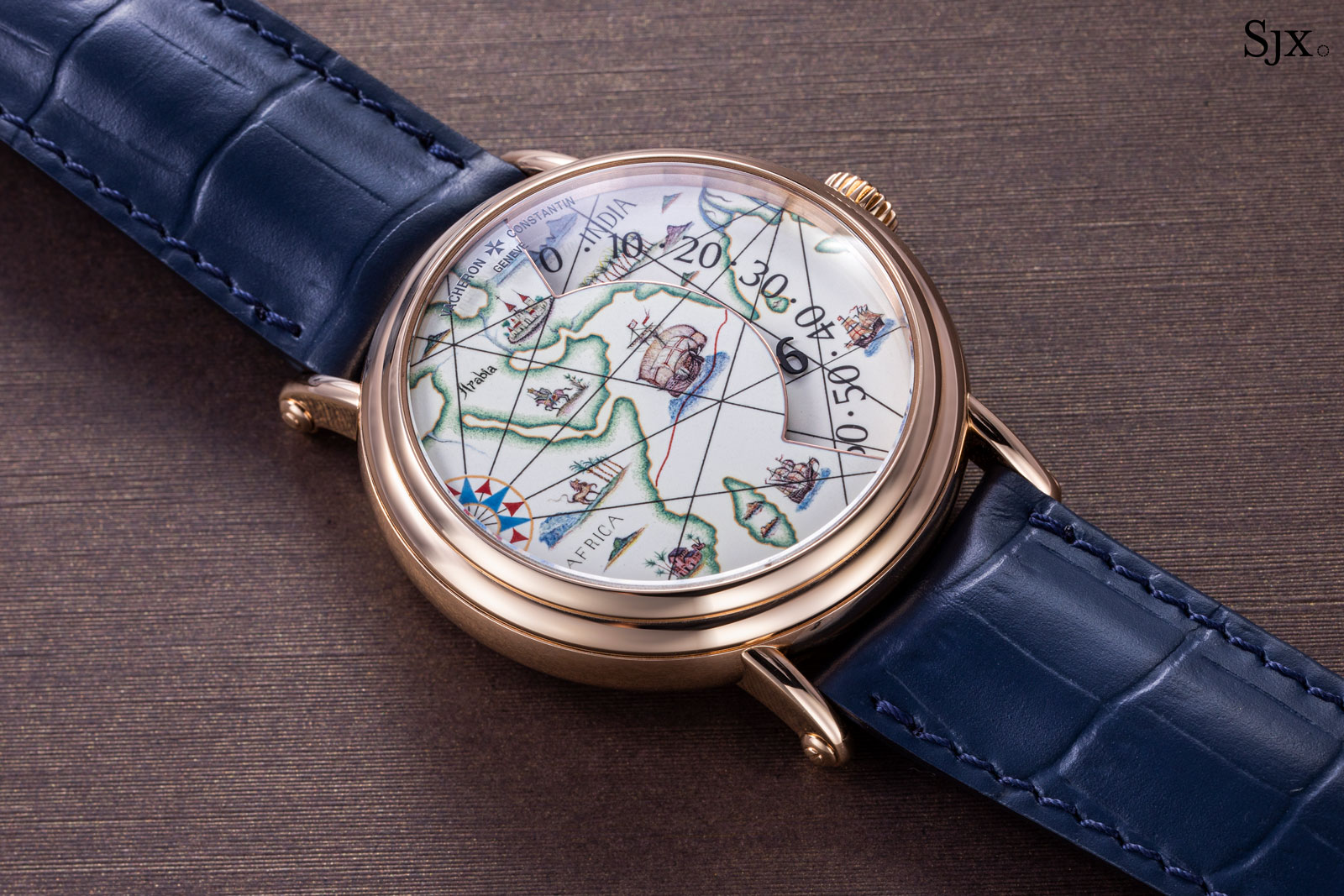
A nuanced, classical case
Like the dial and complication, the case is old-school in style. In fact, it is one of the more classical – and charming – cases in the brand’s current catalogue. Vacheron Constantin doesn’t use this case style often, though one prominent other example of it is the whimsical Métiers d’Art Les Aérostiers.
The style brings to mind complicated watches of the 1980s and 1990s, when this case type was popular. The design is essentially a series of repeating circles, from the bezel to the lug screws, with details that give it a luxe appearance. Most appealing is the double-stepped bezel that consists of twin domed rings, which reinforces the rounded case shape.
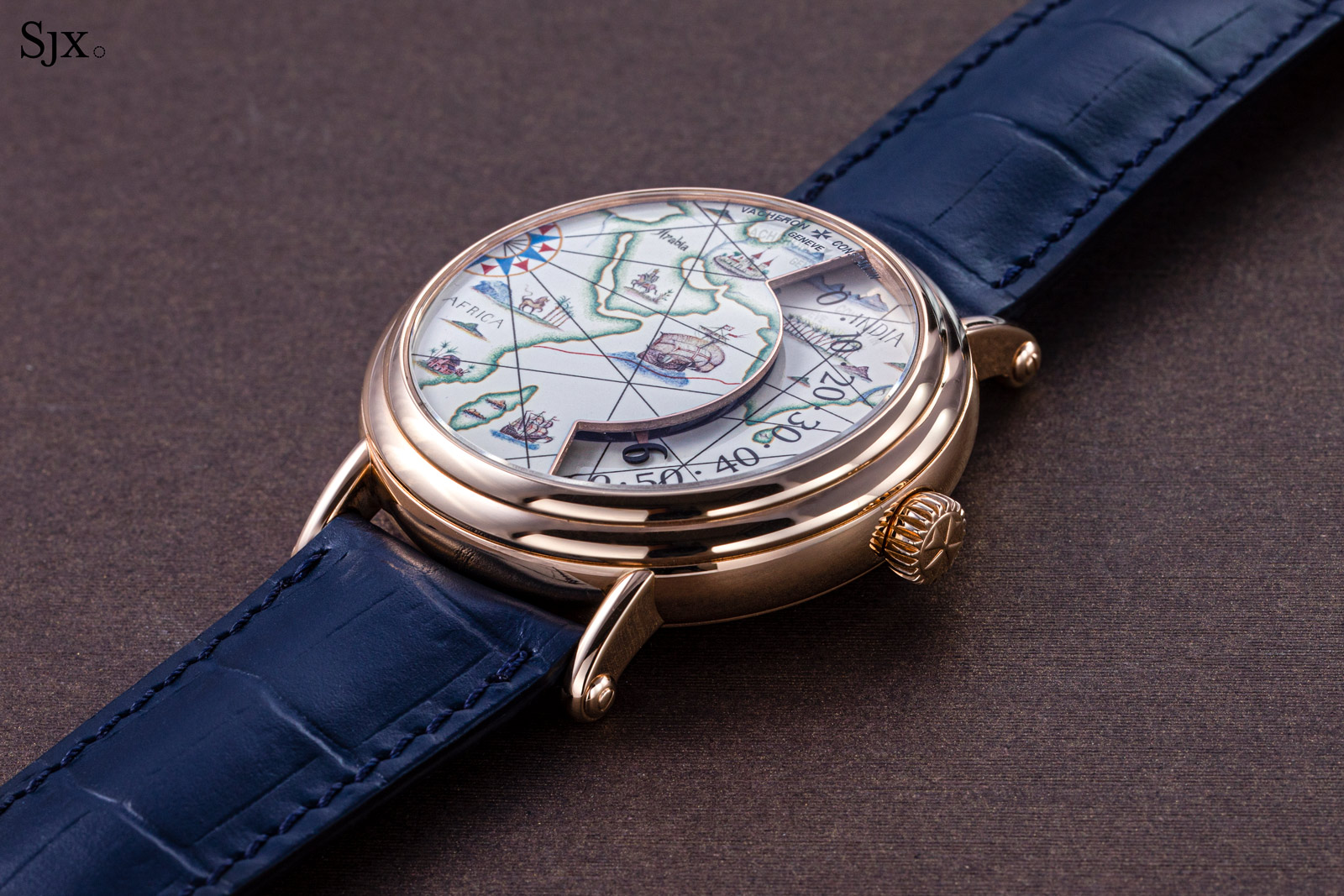
And because the case a large 41 mm, the wide bezel help keep the dial small in proportion. Consequently, the watch doesn’t appear overly large, though it is substantial once you have it in hand. The size contrasts somewhat with the delicate dial decoration, although it isn’t an excessively big watch.
At under 12 mm high, the Vasco da Gama is fairly thin and elegant on the wrist. It helps that much of its height is camouflaged by the thick, double-stepped bezel that’s almost as tall as the case middle.
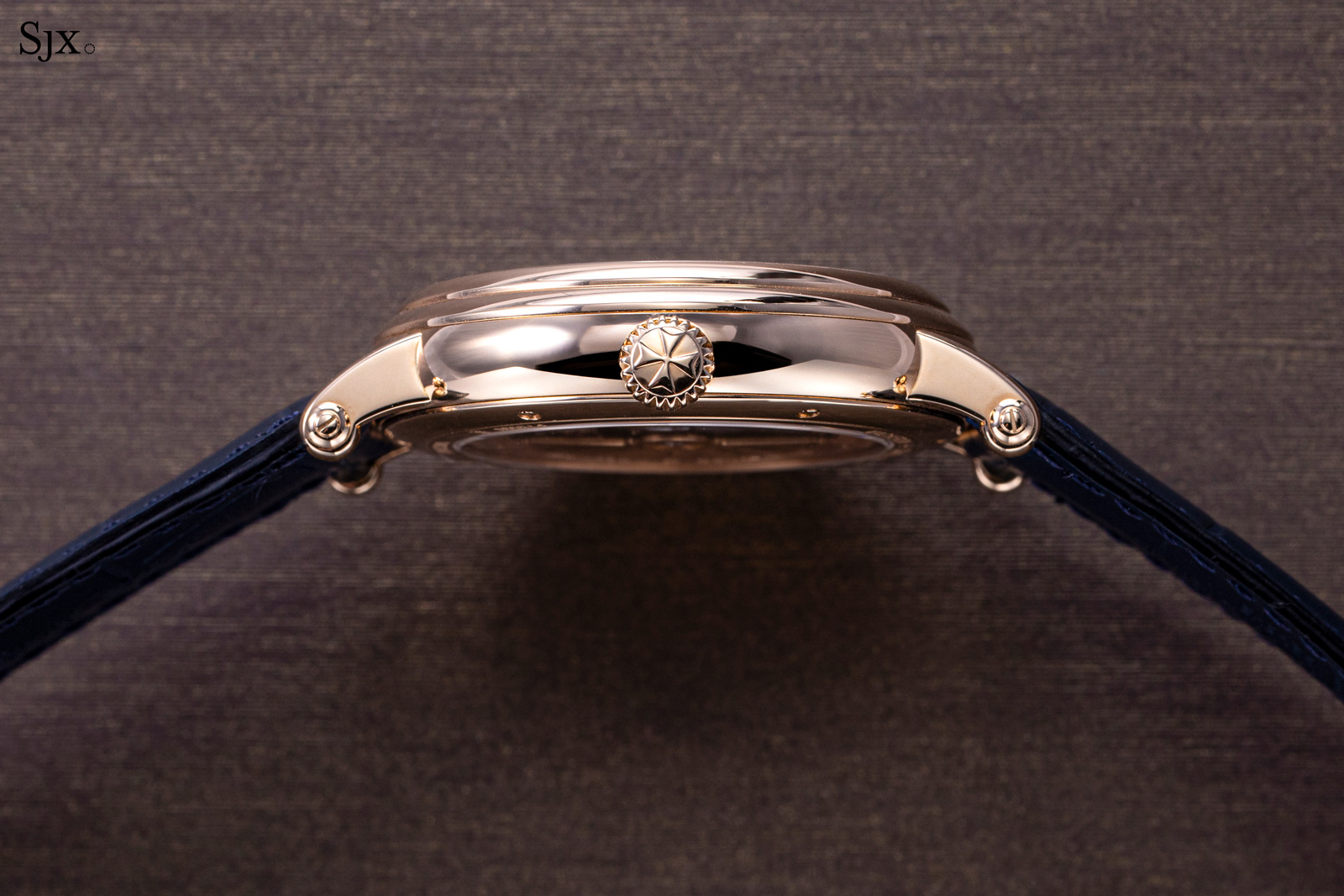
Notably, the case is entirely from that of the earlier Great Explorers, which were in turn evolved from the Mercator. Instead of the stepped lugs of those previous models, this has simple, narrow lugs.
The streamlined shape makes sense since the case is now a lot larger at 41 mm – the Mercator was 36 mm and past Great Explorers 40 mm – so the simpler lugs give the watch a sleeker look.
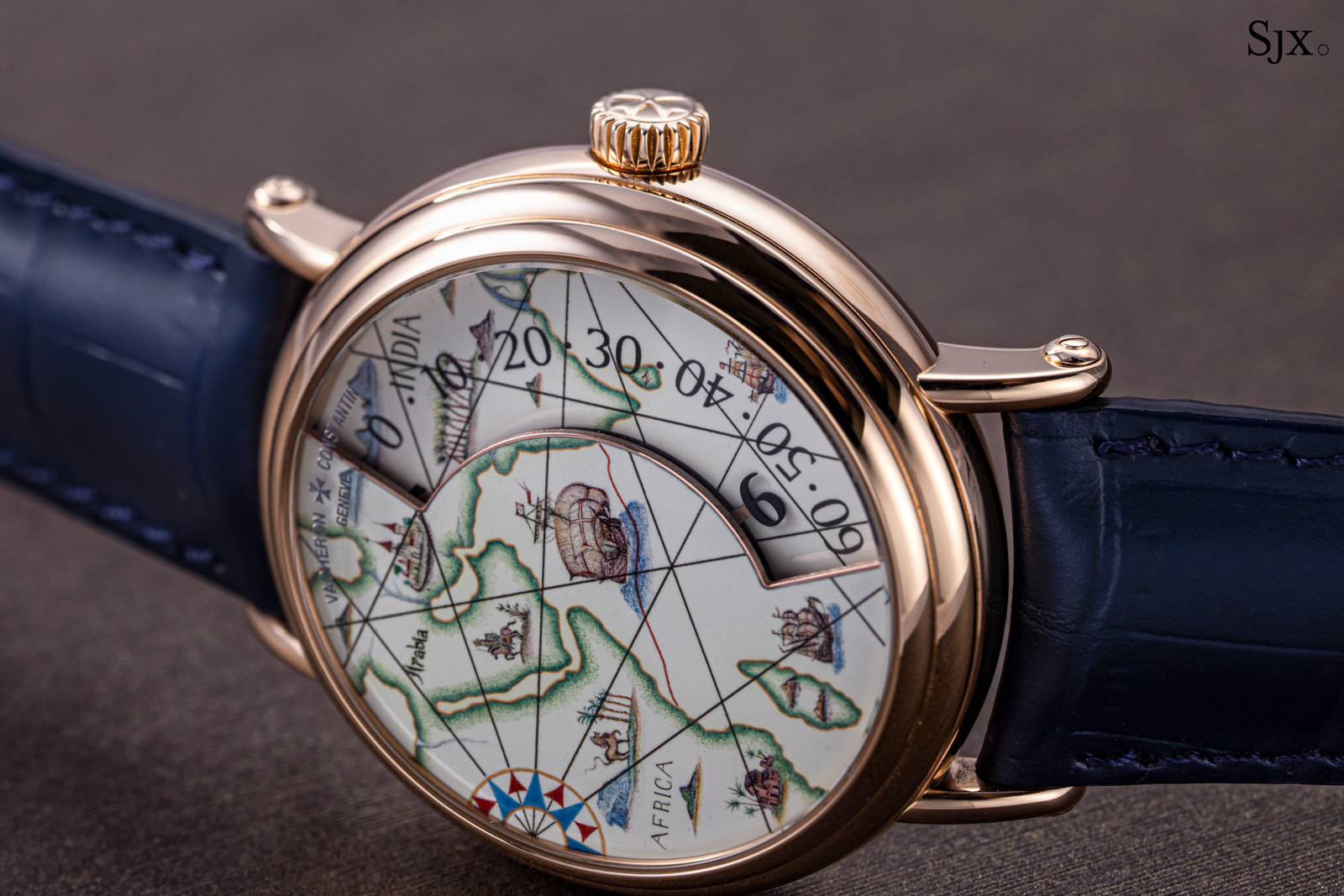
That said, the lugs are simple visually but not simple in tangible terms.
The distinct break between the lugs and the case middle indicate that they are separate parts that were individually soldered to the case middle. Another detail is the cabochon at the end of each lug that contains a screw, which secures the bar for the strap.
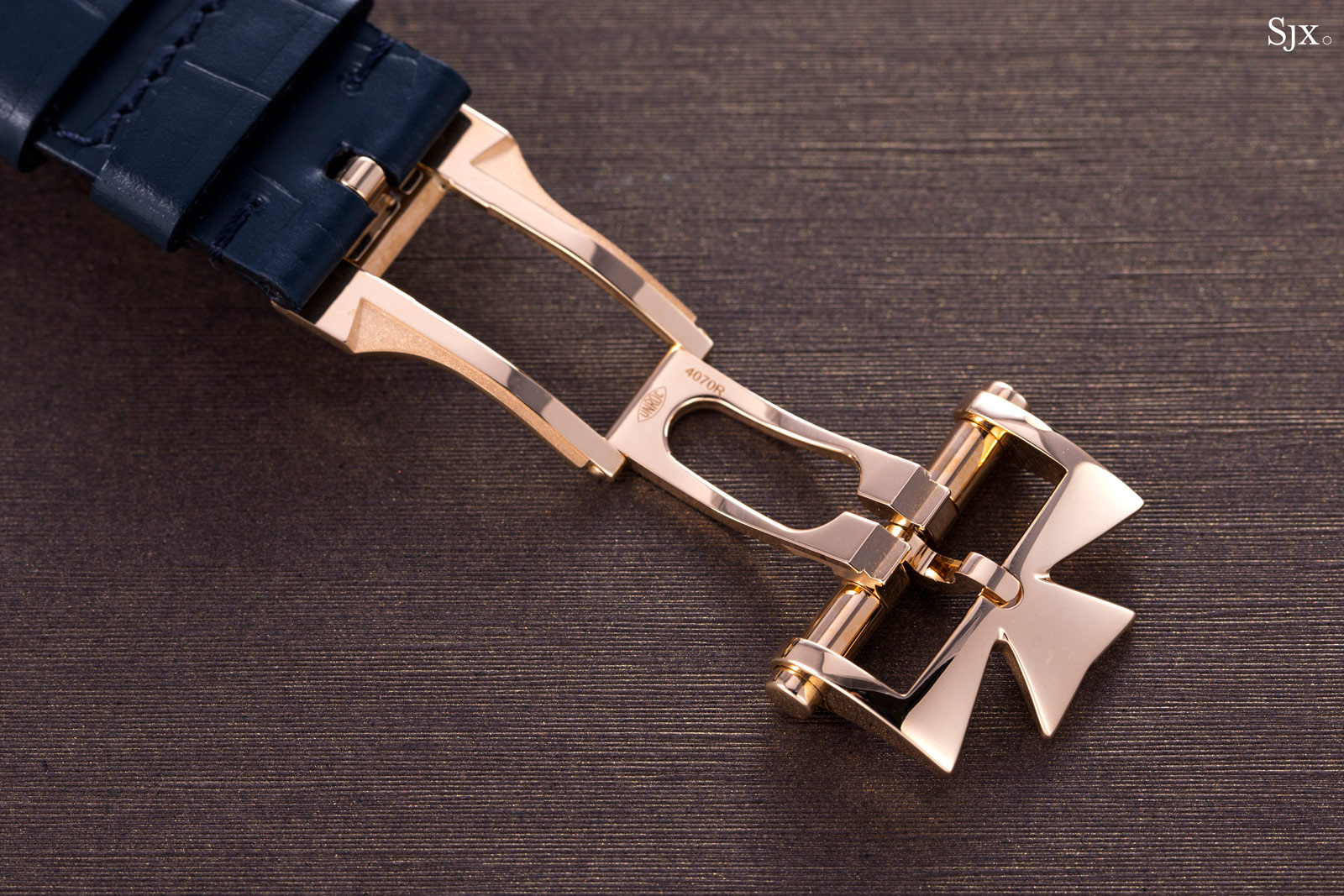
The attention to detail continues on the buckle that’s shaped like a Maltese cross – even the inner blades of the clasp mimic the arms of the cross and are finished in contrasting frosted and polished surfaces
A familiar calibre
Inside the Vasco da Gama is the cal. 1120 AT, which is essentially a cal. 1120 topped with a wandering hours module, bringing the total thickness to 5.45 mm –making it more than twice as tall as the base movement that’s only 2.45 mm.
The cal. 1120 is derived from the Jaeger-LeCoultre (JLC) cal. 920, an ultra-thin automatic movement that’s found in a large number of high-end watches, most famously the Royal Oak “Jumbo” ref. 5402 ST and Nautilus ref. 3700.
Like its fellow “Holy Trinity” watchmakers, Vacheron Constantin has been using this calibre for decades across a variety of watches. Amongst the current models with the same base is the Overseas Perpetual Calendar. In fact, the Mercator also share the same base movement, though it was fitted with a different module for the double retrograde display.
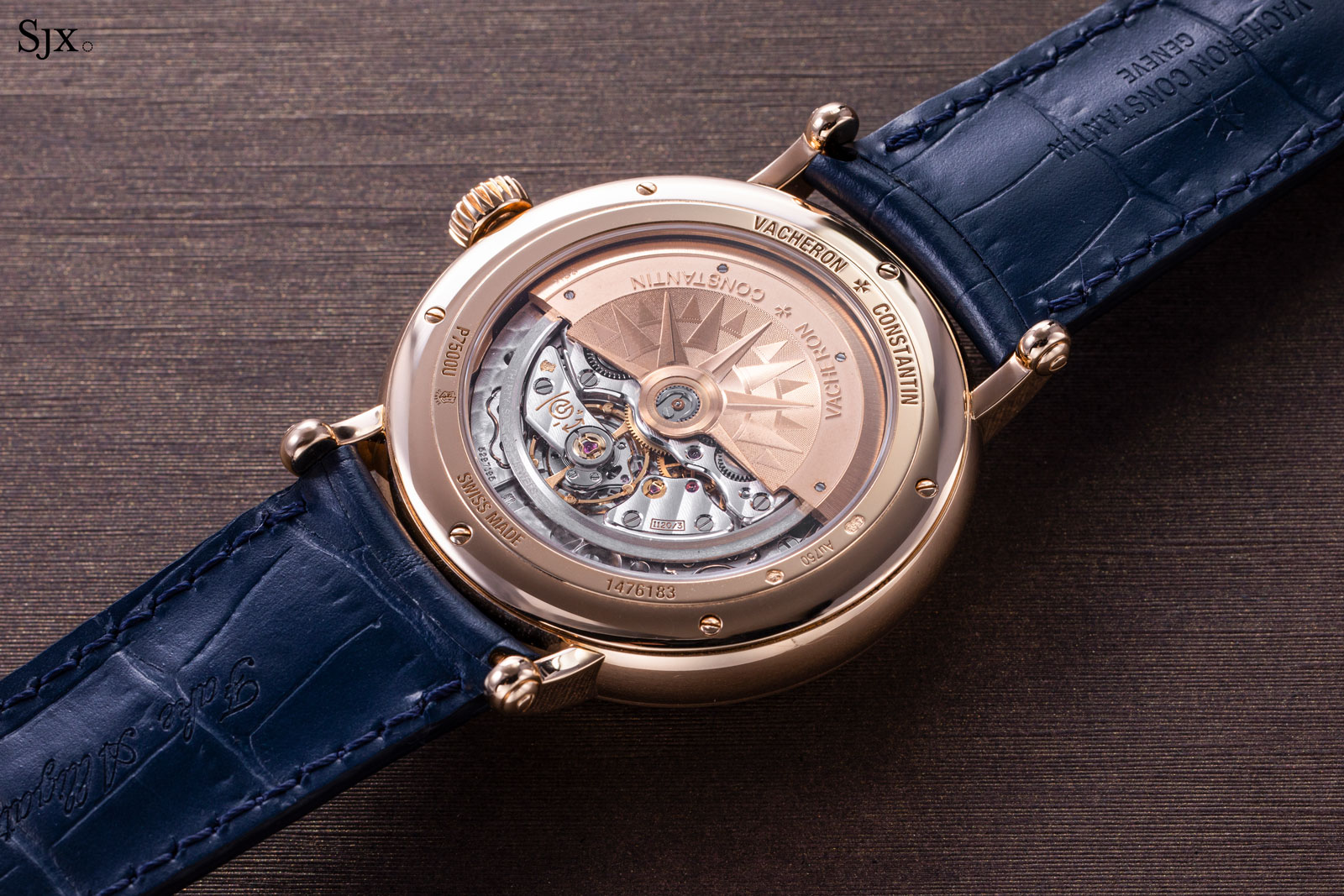
While the time-telling module is hidden under the dial, the view of the movement from the back is a familiar sight
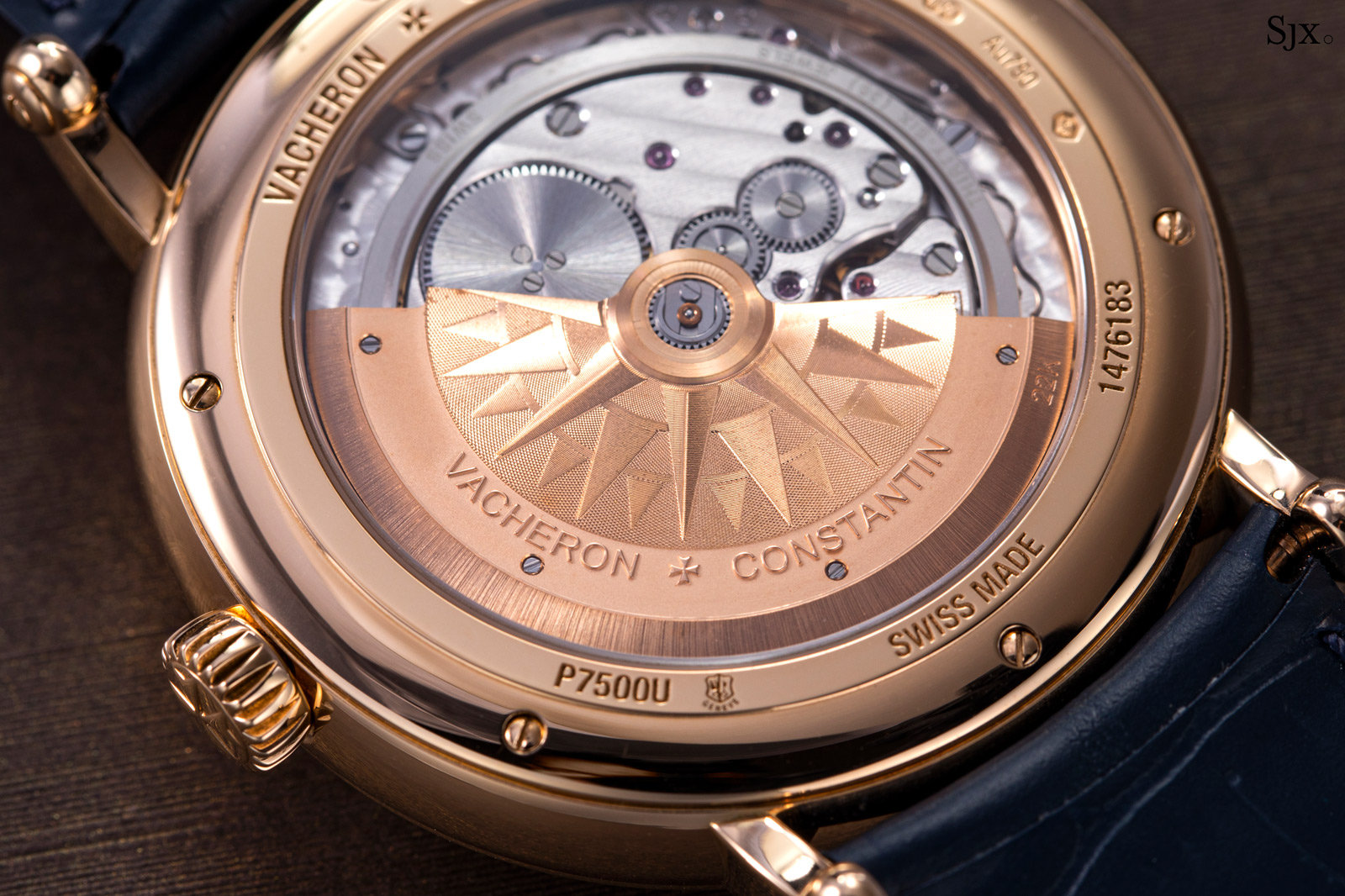
The cartographic motif on the dial is echoed by the compass-rose rotor
The finishing of the movement is typical of Vacheron Constantin – excellent enough to earn the Geneva seal – and superior to most of the brand’s simpler watches, though not quite as artisanal as the brand’s ultra high-end offerings like the Traditionnelle split-seconds chronograph (which costs several times as much to be fair). In other words, the finish is perfect for what it is.
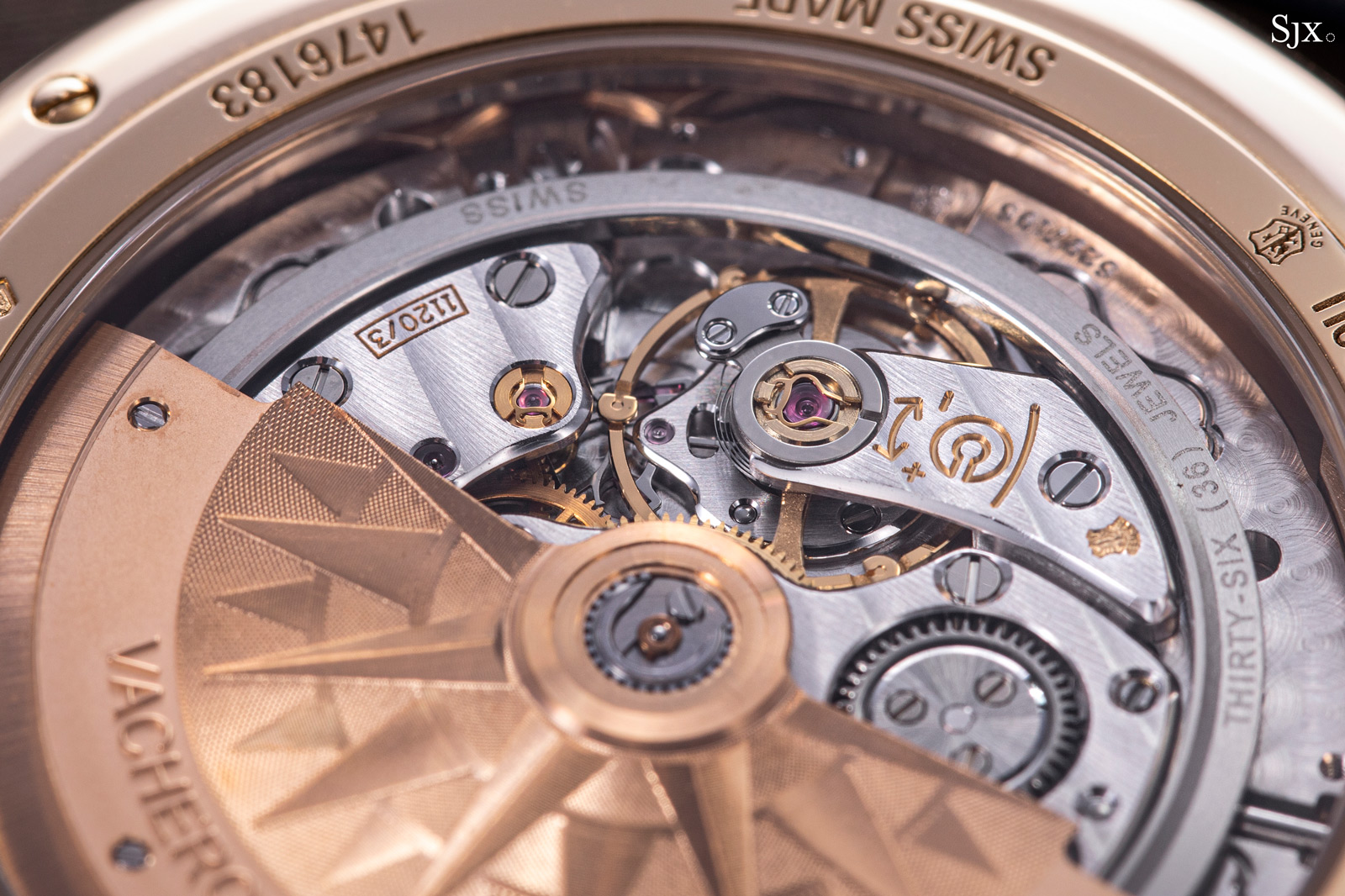
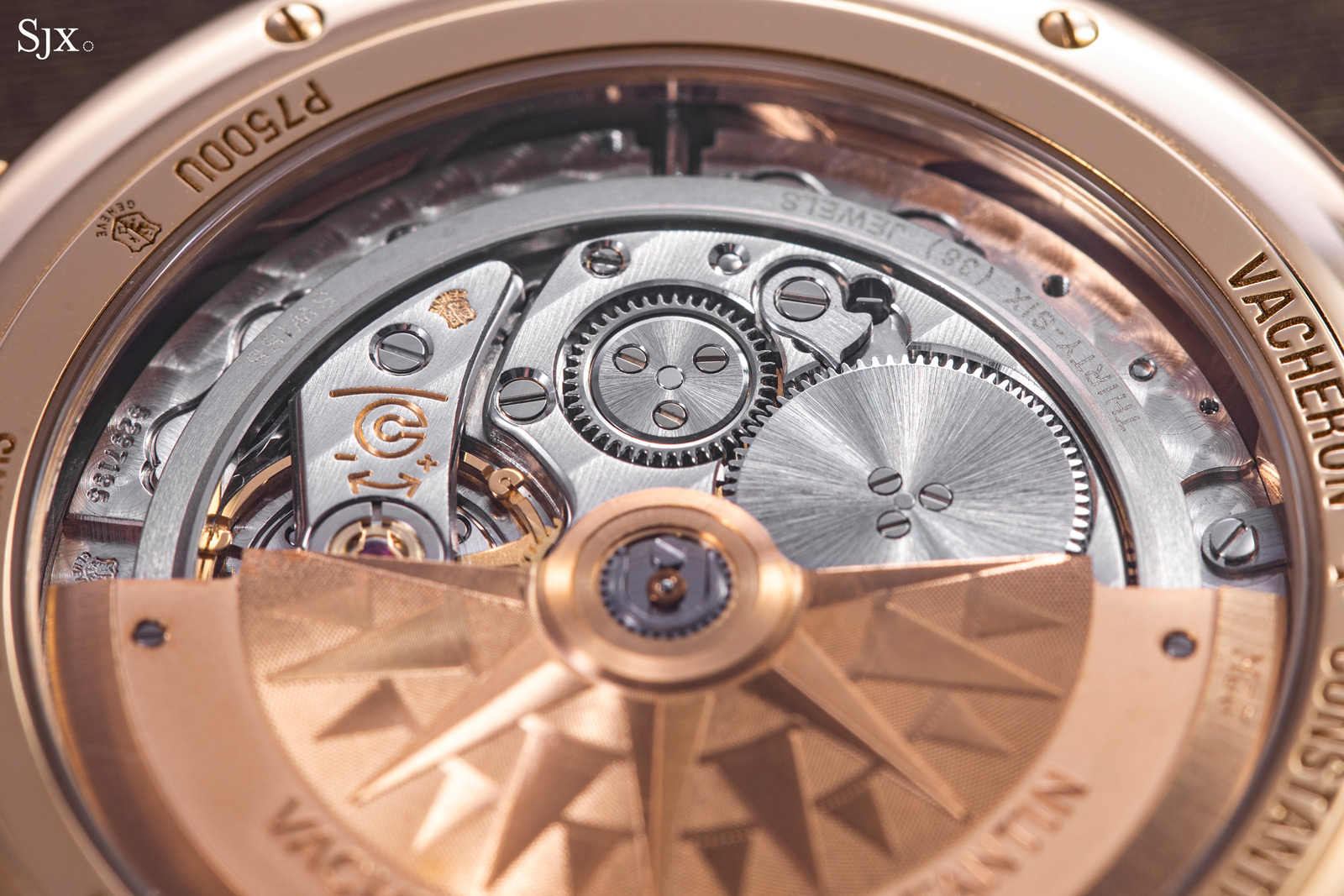
Most notable are the wide, polished bevels along the bridges. They are rounded in profile, which indicate some degree of hand-finishing. It was probably done with a hand-held electric tool, as is often the case with movements from large brands.
But it is not just the bridges that are finely bevelled, even smaller parts like the winding click and escape wheel bridge below the balance are similarly finished, indicating the impressive attention to detail paid to the finishing.
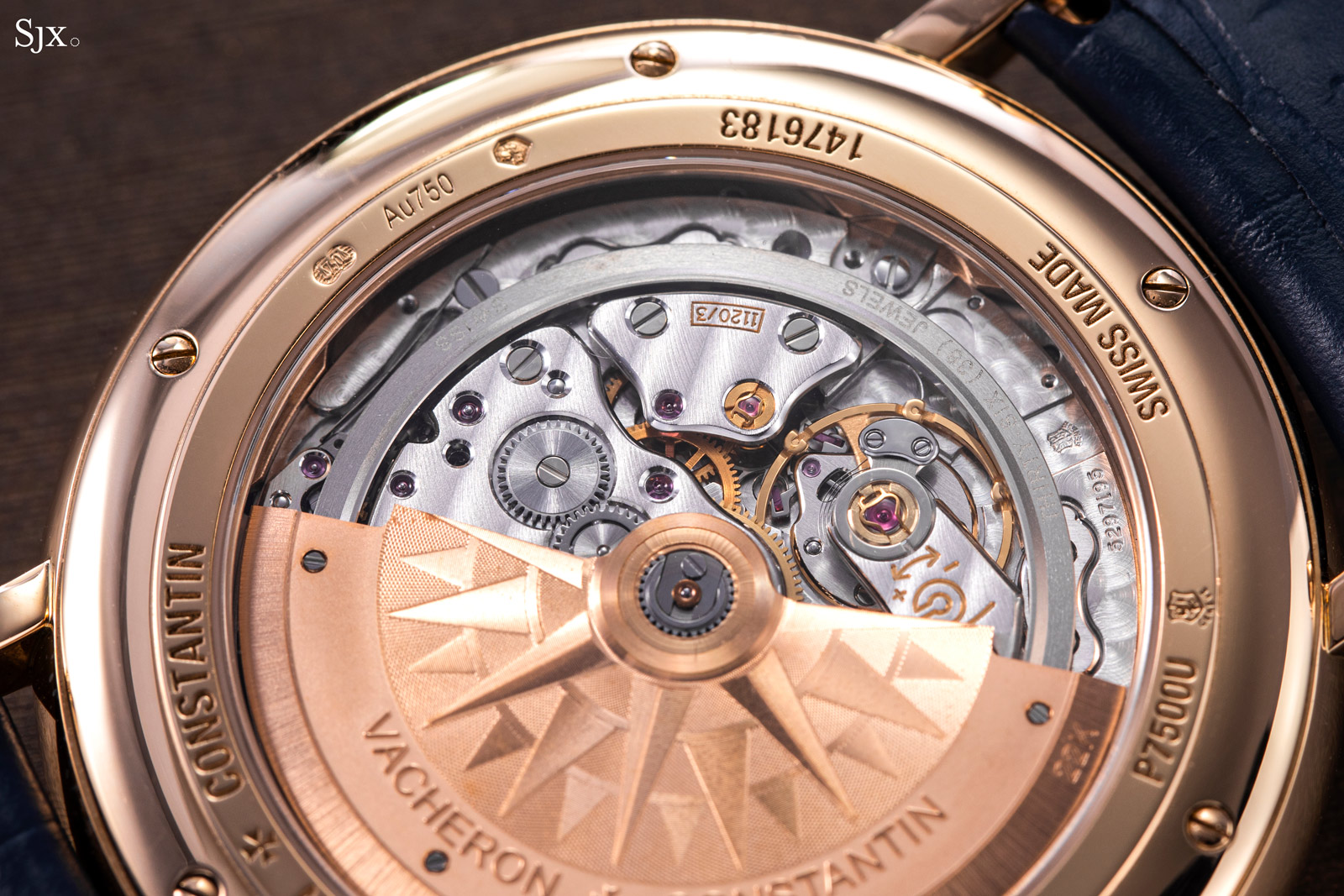
The rounded bevels are apparent even at a distance
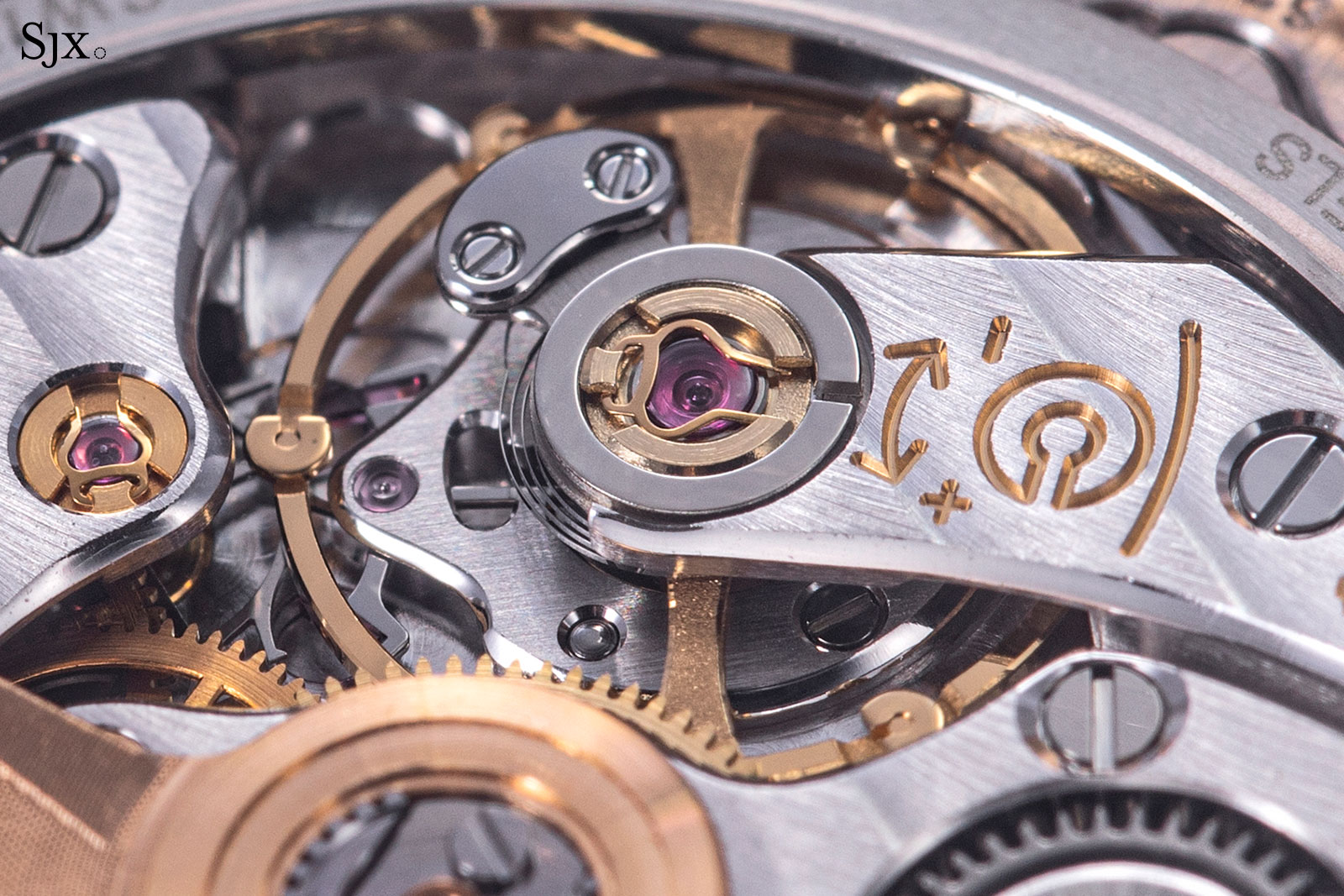
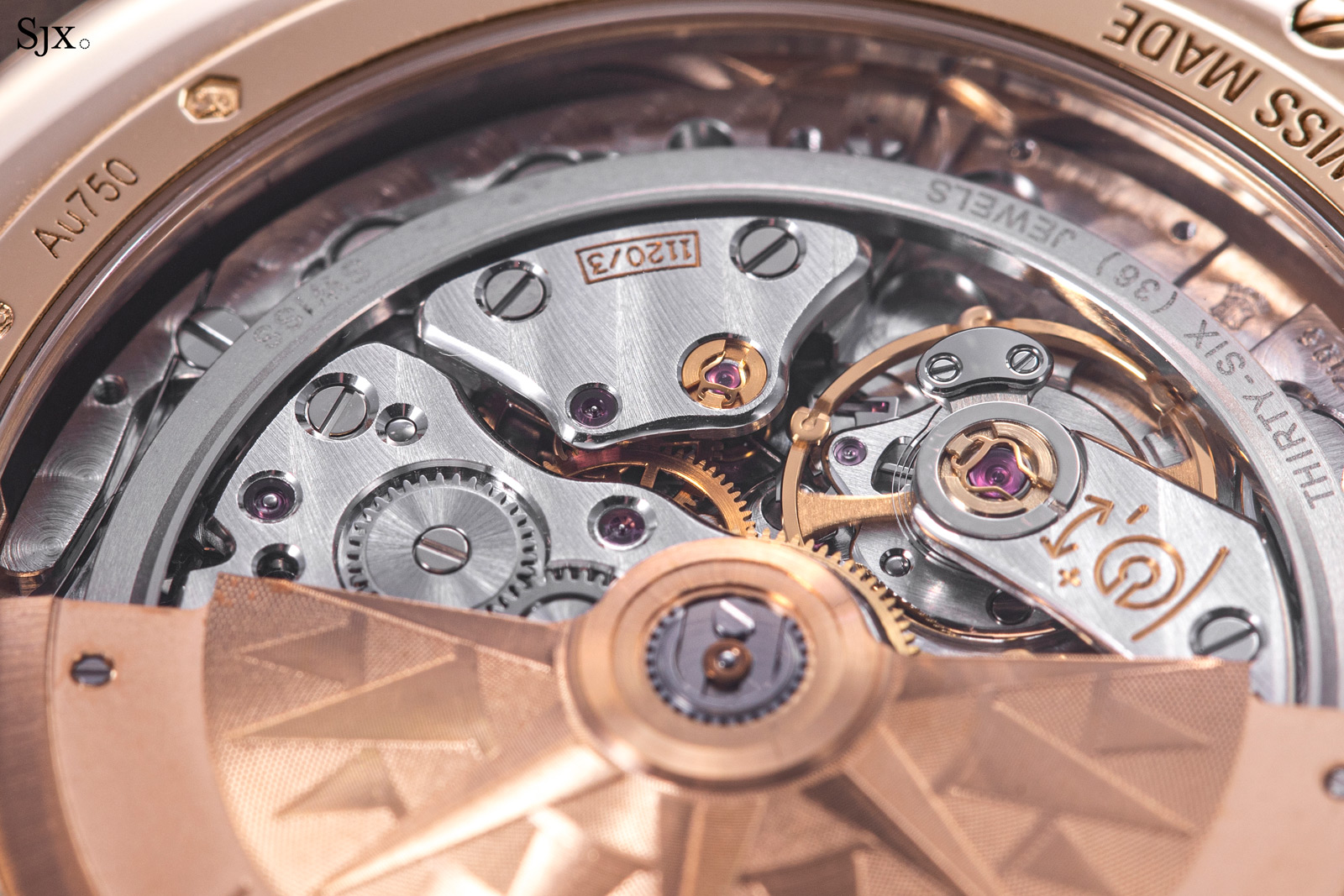
While the external edges of the bridges sport rounded anglage, the bevels for the apertures within the bridges are simpler. Those edges are chamfered but have a flat, sloping profiles with the machining marks still visible, indicating the bevelling was done with a milling machine. This is no doubt a necessity of the movement’s slimness and the awkward position of the recesses on the bridges.
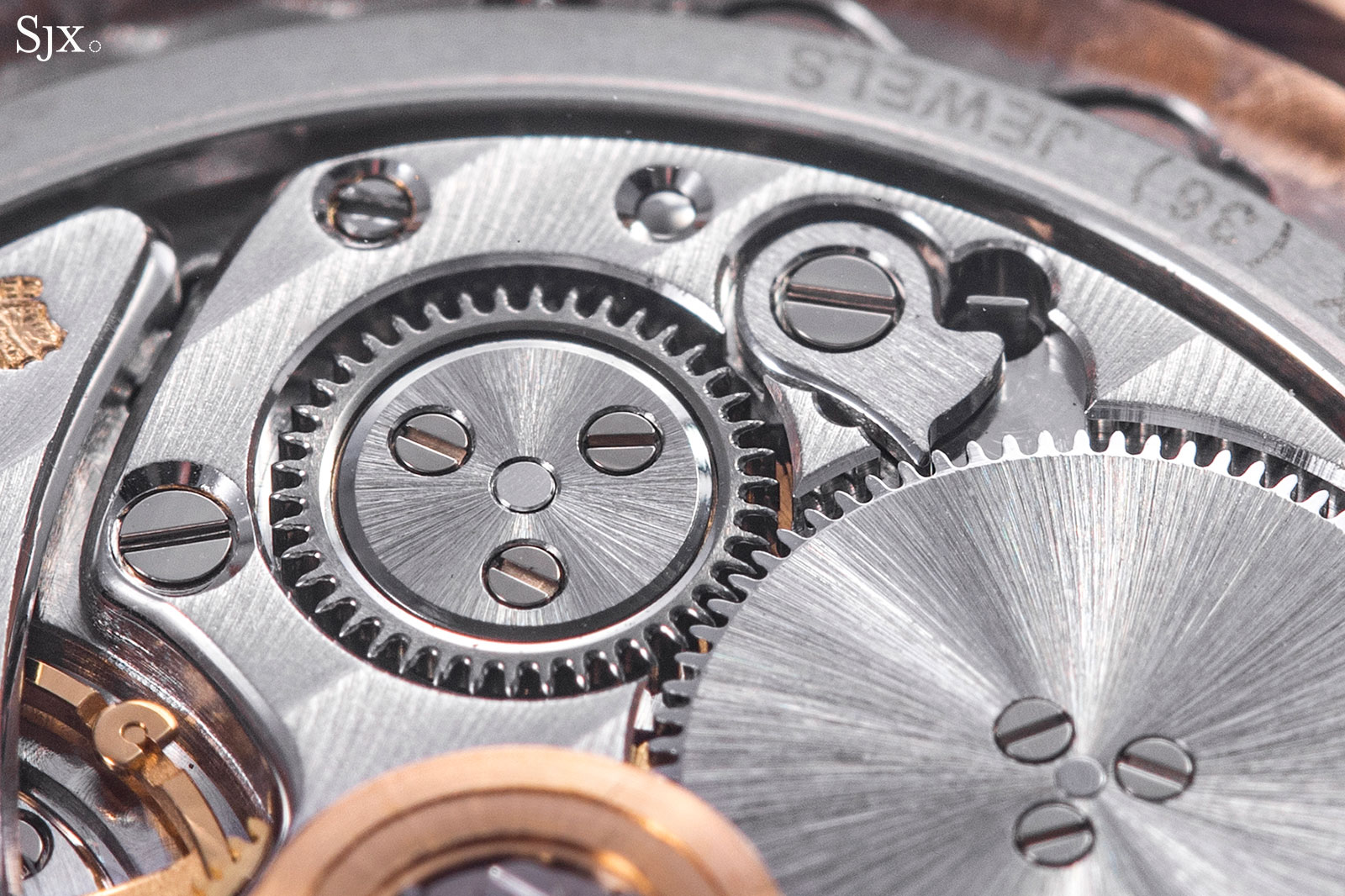
The crown wheel boasts a pleasing, polished chamfer on every single tooth, but the teeth of the barrel ratchet wheel are simply polished and flat
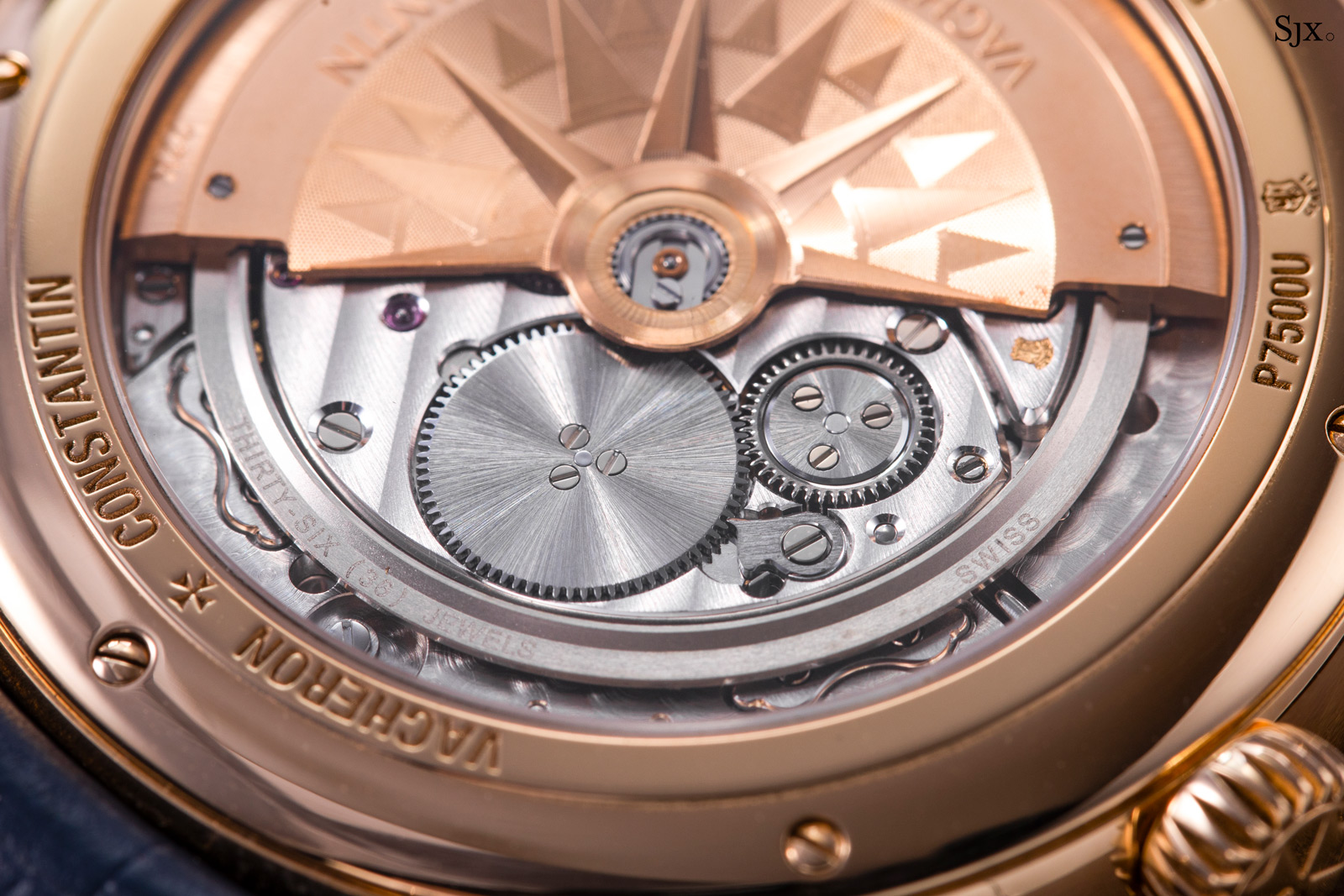
Most of the movement components are elegantly shaped but they lack the sharp, defined inward angles for that extra oomph in the finishing
All of the holes sit in chamfered countersinks, but crucially, the countersinks are are proportional to the screws or jewels they frame. That said, the intersections between countersinks and bevels seem less carefully planned, something that’s noticeable at border of the large screw between the crown wheel and the balance cock. But again this is a consequence of the movement’s thinness, which limits the decorative range.
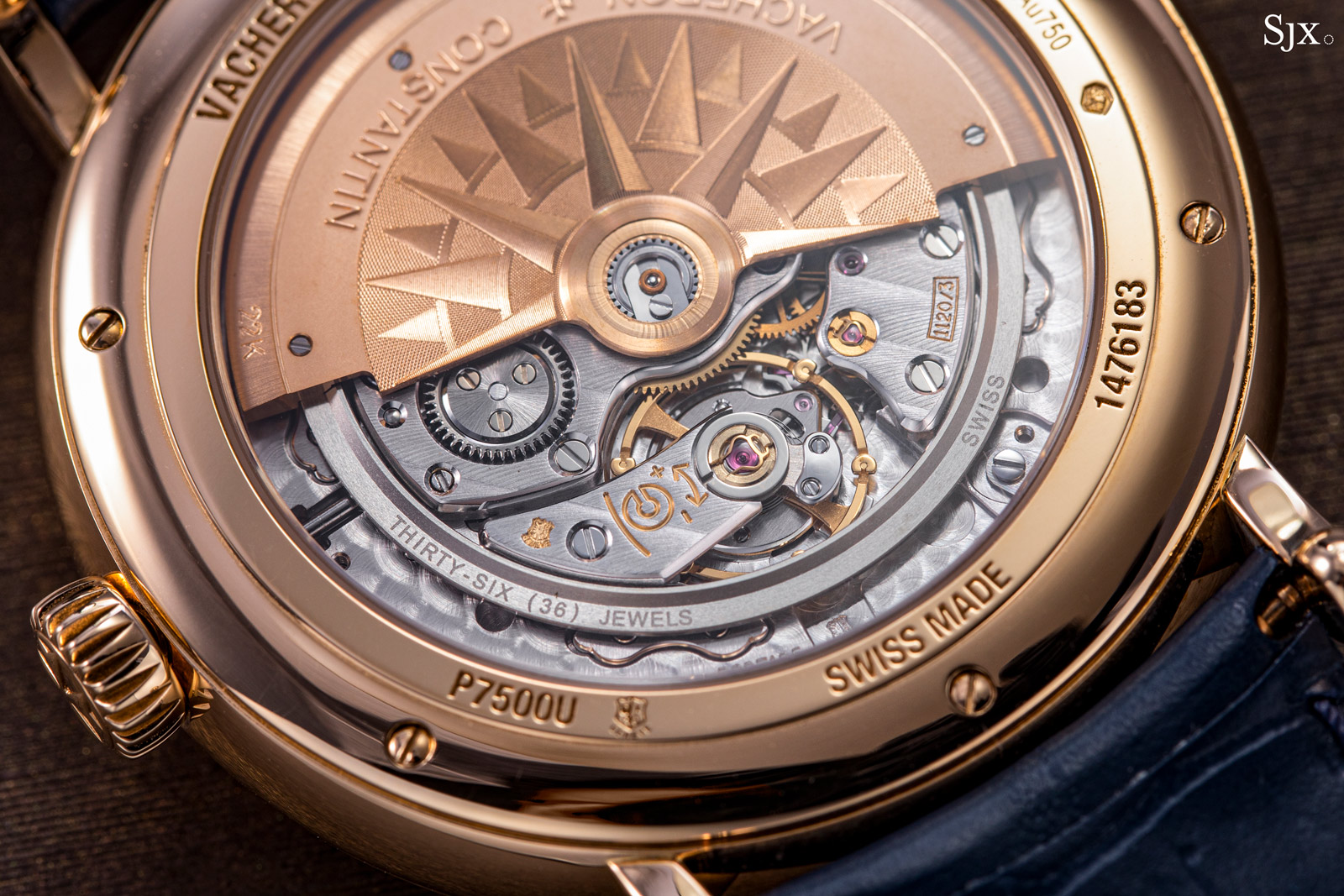
Conclusion
With its meticulously-painted map and cleverly integrated time display, the Vasco da Gama is beguiling. And its appeal is boosted by the sophisticated and slim movement sitting within a handsome, classical case. There’s nothing quite like it on the market – making it an interesting watch indeed.
Key facts and price
Vacheron Constantin Métiers d’Art Tribute to Great Explorers
Ref. 7500U/000R-B687 (Bartolomeu Dias)
Ref. 7500U/000R-B688 (Vasco da Gama)
Ref. 7500U/000R-B689 (Pedro Álvares Cabral)
Case diameter: 41 mm
Height: 11.68 mm
Material: 18k pink gold
Crystal: Sapphire
Water resistance: 30 m
Movement: 1120 AT
Features: Hours and minutes
Frequency: 21,600 beats per hour (3 Hz)
Winding: Automatic
Power reserve: 40 hours
Strap: Alligator strap with folding clasp in gold
Limited edition: 10 pieces each
Availability: At Vacheron Constantin boutiques only
Price: US$121,000 or 188,000 Singapore dollars
For more, visit vacheron-constantin.com.
Back to top.
